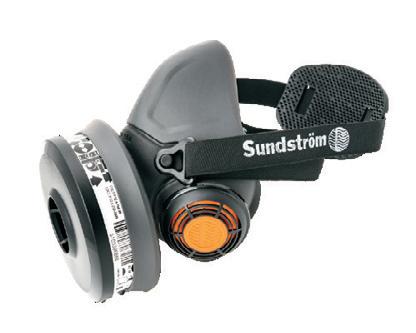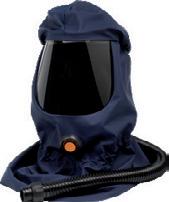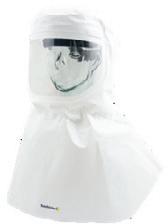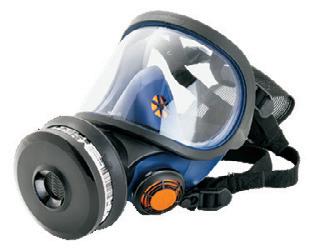
November 2022 | Vol.17 No.1 PP 100007391 WORKPLACE DRUG AND ALCOHOL PROGRAMS: KEY CONSIDERATIONS TOP TIPS: SELECTING THE SAFEST HEADGEAR ON SITE THE ONGOING DANGERS OF SILICA DUST IMPROVING FATIGUE IN THE FIELD
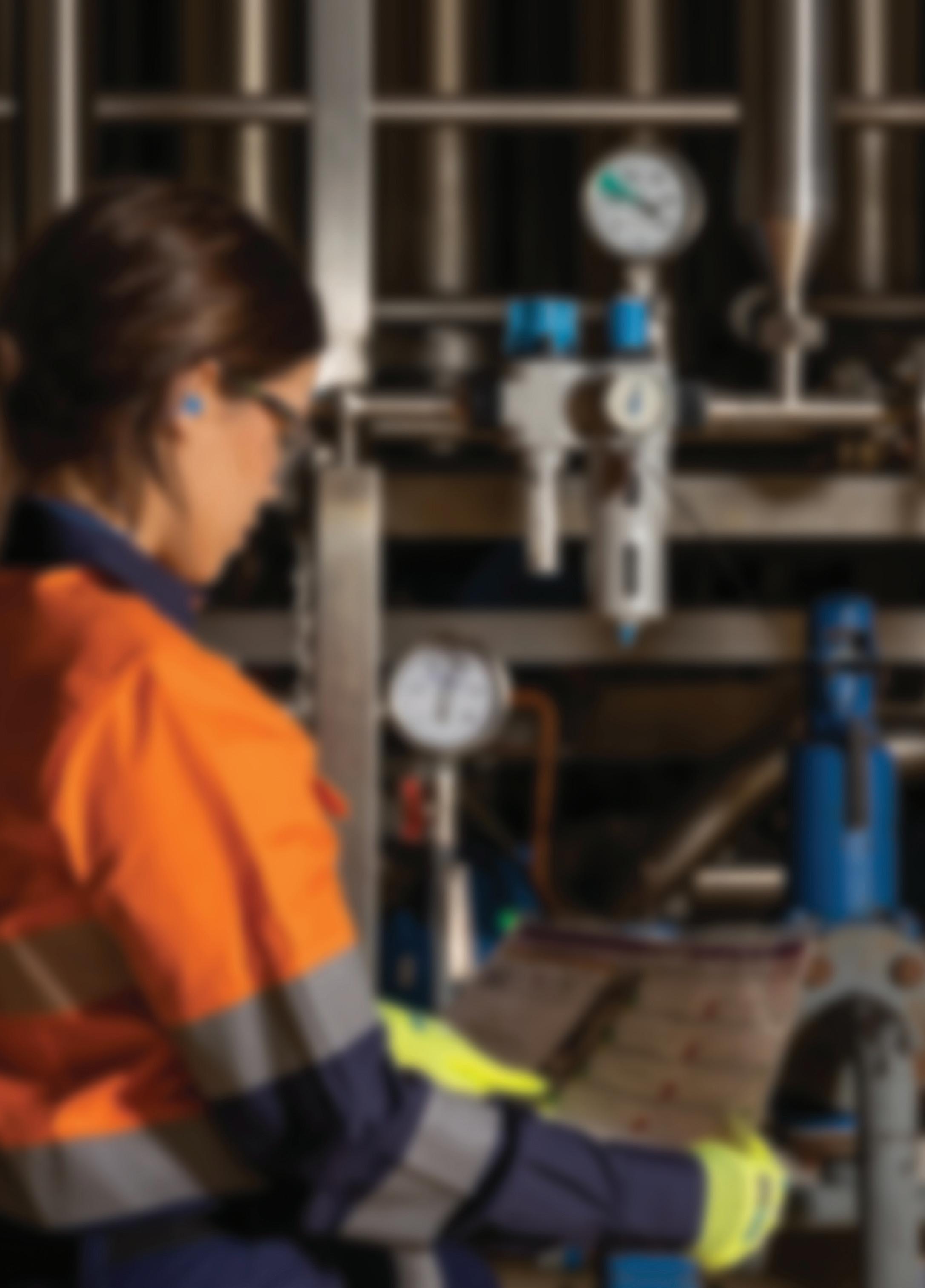
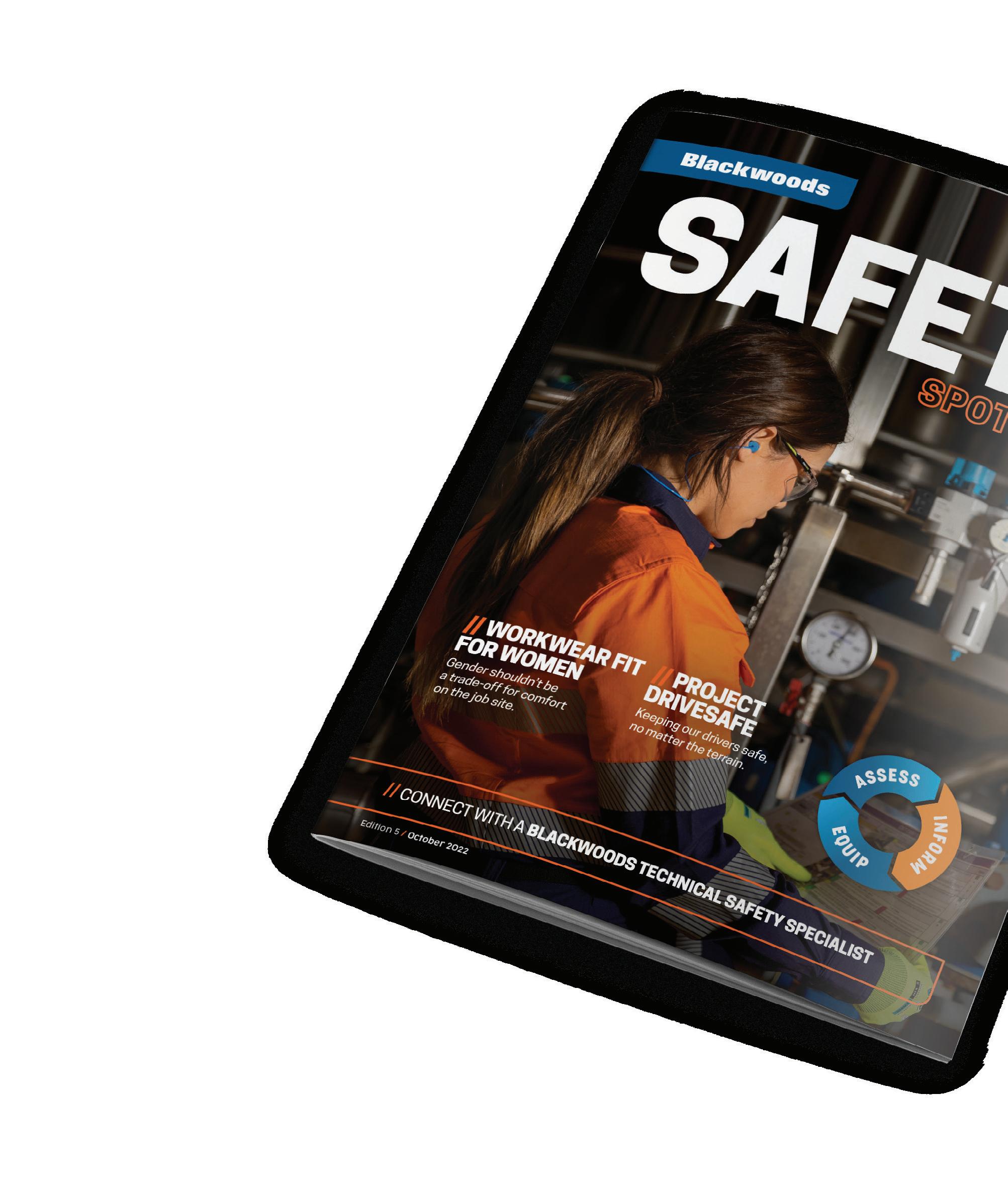


Welcome to the final issue of Safety Solutions for 2022 — and hasn’t the year just flown by?
The November issue takes a close-up look at the construction industry, with a particular focus on drugs and alcohol, safety headgear and respira tory protection.
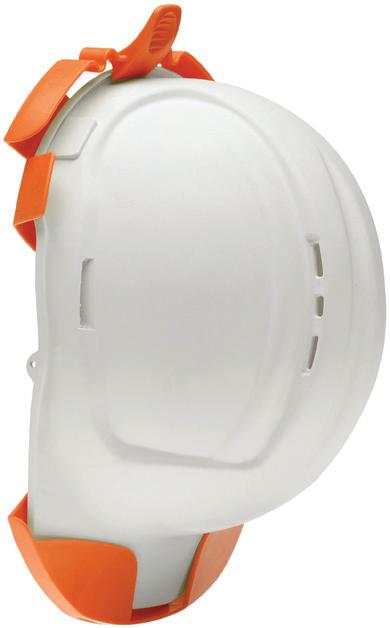



Research shows that construction is one of the high-risk industries when it comes to substance abuse in the workplace. I spoke with Associate Professor Ken Pidd, who recently retired as the Deputy Director of Research at the National Centre for Education and Training on Addiction at Flinders University, about the importance of education and training when it comes to implementing drug and alcohol policies in the workplace.
This issue also takes a look at the ongoing risks associated with workplace exposure to silica dust.
Over the past 60 years, silicosis was a very rare occurrence in Australia, but the increased use of engineered stone in kitchen benchtops is driv ing a re-emergence of the disease. As many as 10,000 Australians are now predicted to develop occupational lung cancer within their lifetimes. Finally, Priyal Saswade offers some top tips for selecting safety headgear to protect against injury on worksites.

As the year winds down and draws to a close, I would like to wish you all a safe and happy festive season — see you in 2023!
Amy Steed Editor, Safety Solutions
FROM THE EDITOR
ss@wfmedia.com.au CONTENTS SAFETY SOLUTIONS NOVEMBER 2022 4 In the news 8 Workplace drug and alcohol programs: some key considerations 16 The ongoing dangers of silica dust 18 Top tips: selecting safety headgear for construction sites 22 Fatigue in the field 29 Important considerations for a lockout tagout system 30 Taking action on occupational noise-induced hearing loss 37 Why construction must focus on mental health resilience 41 Powering up respiratory protection with modern PAPR technology Your copy of Safety Solutions is available as an online eMag. READ ONLINE! www.safetysolutions.net.au/magazine Cover image iStock.com/AzmanL November 2022 Vol.17 No.1 PP 100007391 WORKPLACE DRUG AND PROGRAMS:ALCOHOLKEY CONSIDERATIONS TOP TIPS: SELECTING THE HEADGEARSAFESTON SITE THE DANGERSONGOING OF SILICA DUST IMPROVING FATIGUE IN THE FIELD WORKPLACE DRUG AND ALCOHOL PROGRAMS: KEY CONSIDERATIONS TOP TIPS: SELECTING THE SAFEST
NSW ADOPTS WHS REGULATIONS TO ADDRESS PSYCHOSOCIAL HAZARDS AT WORK
New South Wales will be among the first jurisdictions in Australia to implement recent changes to the national model WHS regulations, which recognise psychosocial hazards in the workplace and require businesses to implement control measures to manage risks. Natasha Mann, Head of SafeWork NSW, said businesses are already implementing the NSW Code of Practice: Managing psychosocial hazards at work, with new laws which provide workplaces with clarity on their obligations and specifying control measures they could use.
Mann said that the new regulations require businesses to, as far as reasonably practicable, eliminate psychosocial risks and advise what should be considered when implementing appropriate control measures.
“Psychosocial risks and hazards can cause a stress response leading to psychological or physical harm. They can stem from the work itself in the way it is designed and managed, from hazardous working environments, equipment use and social factors in the workplace,” Mann said.
The changes will also complement the establishment of SafeWork NSW’s Respect@Work Taskforce, the NSW Government’s $9.7 million response to the Respect@Work Report on Sexual Harassment in the Workplace. After a number of incidents, the model regulations will also provide improved record keeping and operator training for amusement devices and passenger ropeways.
“At the Sydney Easter Show this year we saw what can happen quickly on amusement rides. By putting in place greater requirements for training and more robust reporting we will see operators required to lift industry standards,” Mann said.
The Work Health and Safety Amendment Regulation 2022 makes several amendments to the Work Health and Safety Regulation 2017.
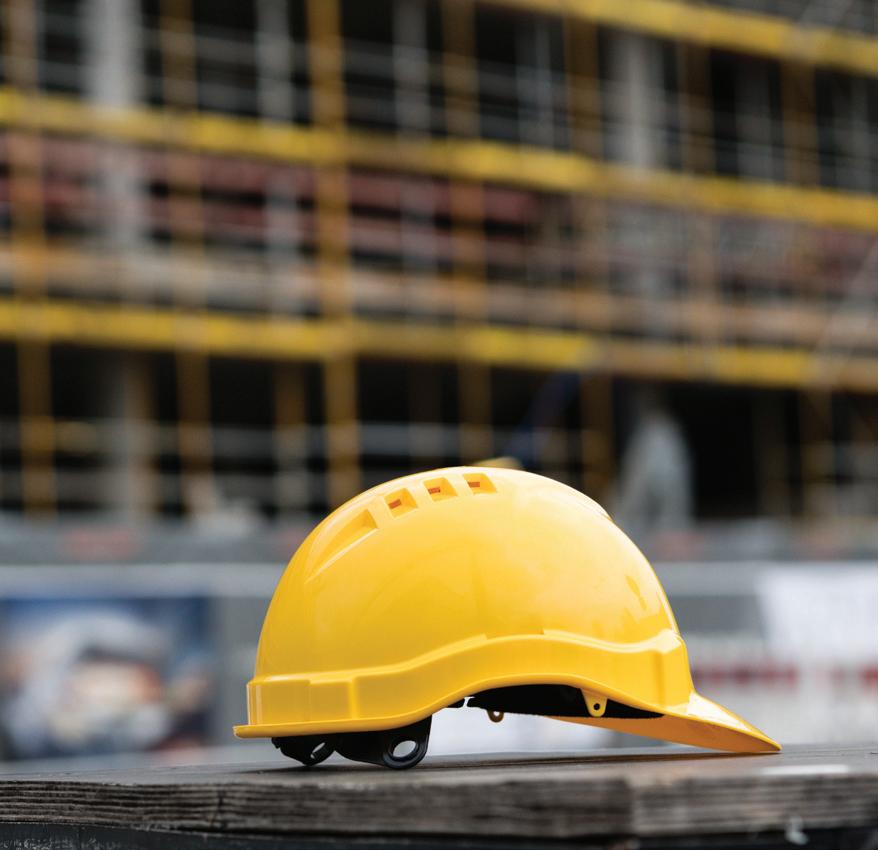
INSPECTORS LAUNCH CAMPAIGN TO PROMOTE SAFETY IN TREE WORK SECTOR

SafeWork NSW inspectors have commenced visits to businesses in the tree work industry across NSW to improve safety and compliance in the sector. SafeWork Executive Director of Compliance & Dispute Resolution Matthew Press said the campaign aims to raise awareness for the industry, as it continues to record too many serious accidents.
Press said that there have been over 270 incidents in the industry since March 2018; during that time, workplace compensation payments have cost the NSW workers compensation system over $49.5 million, with a considerable amount of potential under-insurance identified in the sector. As part of the campaign, inspectors will be visiting businesses that undertake arborist activities such as tree mulching, lopping and removal, and will focus on the highest incident areas falls from heights, being struck by falling objects, and safe use of wood chippers.
Inspectors will also be verifying that all workers undertaking traffic control work on or adjacent to public roads hold a Traffic Control Work Training card, and will educate operators on traffic control training requirements.
“Referrals will be made to the NSW State Insurance Regulatory Authority if non-insurance or under-insurance is suspected during the visits, with fines of up to $3600 for undertaking work without a necessary licence or authorisation. Planning is key when conducting tree work. Whether you are a business owner or worker, everyone has a responsibility to ensure workplaces are as safe as possible,” Press said.
4 SAFETY SOLUTIONS NOVEMBER 2022 www.safetysolutions.net.au IN THE NEWS
iStock.com/Cineberg iStock.com/Akintevs
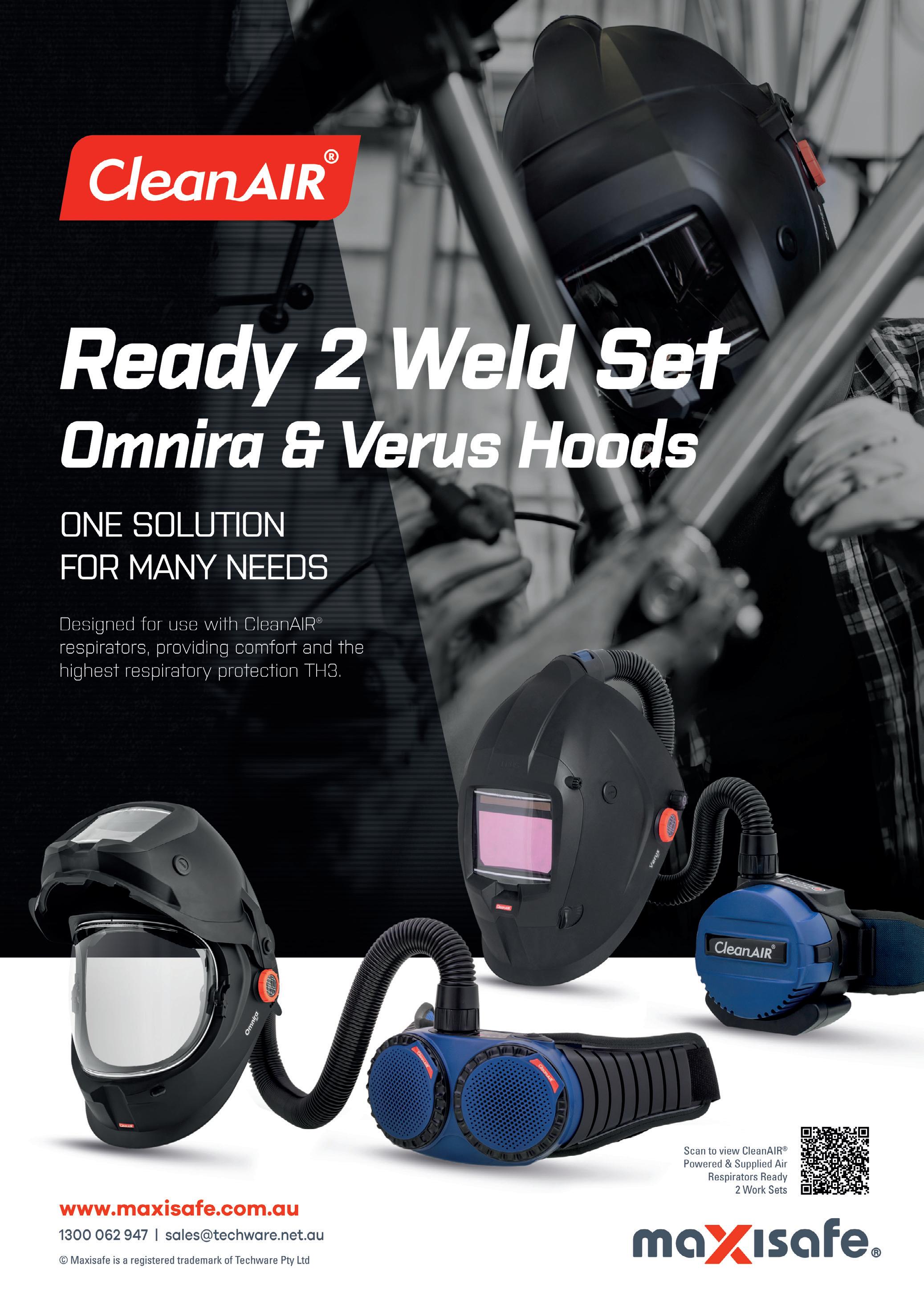
QLD HALVES WORKPLACE EXPOSURE LIMITS FOR COAL DUST

The workplace exposure standard for respirable coal dust has been halved in Queensland, revised from a time-weighted average of three milligrams per cubic metre (mg/m3) down to 1.5 mg/m3 Respirable coal dust can be generated and made airborne during a number of work processes using coal, such as coal combustion processes, shutdown maintenance activities, housekeeping and cleaning of workplaces where coal is used, and the handling and transport of coal and coal fly ash.
Businesses that work with coal need to review existing dust controls and procedures to ensure that they meet the new standard and keep workers safe, particularly any businesses that use coal-fired boilers (such as coal-fired power stations and refineries). Businesses must also continue to meet existing requirements for air and health monitoring, as well as providing appropriate training and respiratory protective equipment.
Workers must take reasonable care for their own health and safety and comply with any reasonable policy or procedure from the business for keeping them safe from coal dust exposure at work. Workers must also wear any appropriate personal protective equipment provided by the business, so far as they are reasonably able to, in accordance with training, information and reasonable instruction.
WorkSafe Queensland has established the Managing respirable dust hazards in coal fired power stations code of practice 2018 to provide clear, enforceable standards for industry. WorkSafe is also investing $5 million in medical research that improves the health and wellbeing of Queensland workers with occupational dust lung diseases like coal workers’ pneumoconiosis and silicosis.
VIC FREIGHT COMPANY FINED $35,000 AFTER TRUCK FATALITY
Freight company Tarantino Investments Pty Ltd has pleaded guilty to a single charge of failing to ensure that plant being used for a purpose for which it was supplied was safe and without risks to health, following the death of a garbage truck driver at Epping. The company was fined $35,000 without conviction and ordered to pay $7500 in costs.

In December 2019, a subcontracted truck driver was supplied with a side loading trailer to transport a full shipping container from the company’s Brooklyn depot to a business in Epping. After unloading the container, the driver noticed that one of the stabilising legs on the trailer’s crane did not fully retract using the remote control and used manual levels to retract it. The driver then moved the truck to load an empty shipping container before driving back onto the road without realising that the rear stabilising leg had not fully retracted and was sitting parallel with the ground. A short time later the protruding stabiliser leg collided with the cabin of a garbage truck travelling in the opposite direction, killing the garbage truck’s driver instantly.
An investigation found that the wiring of the side loading trailer was in a poor state of repair, having suffered some previous structural damage, and the remote control had been repaired with duct tape and cable ties. It was reasonably practicable for the company to have implemented a regular maintenance regime of the electrical and mechanical componentry of the trailer by a suitably qualified person; ensured that the control box and electrical componentry were in reasonable working condition; or replaced the control box and electrical componentry when regular maintenance issues arose.
Duty holders using plant fitted with a stabilising arm or outriggers are advised to ensure that warning or indicating systems are fitted to alert or remind the driver that the outriggers or stabilising arms are deployed. Mechanical or hydraulic locks must also be fitted to prevent extension of the outriggers or stabilisers during transit, with manual (non-powered) stabilisers or outriggers incorporating a secondary latching or locking mechanism to reduce the likelihood of the outrigger or stabilising arm extending during transit.
Duty holders must also ensure that drivers are trained in the use of plant, including how to secure/stow the plant for transport. The plant must be used in line with the manufacturer’s instructions. All plant, including warning and indicating systems, must also be regularly inspected and maintained to ensure it is operating as intended. Duty holders are also advised to control fatigue risks and ensure drivers are fit for work.
WorkSafe Director of Health and Safety Narelle Beer said there was no excuse for failing to maintain vehicles being used for work. “This company’s failure put other road users in extreme danger. Tragically, we have already seen 12 workers killed in vehicle accidents this year and WorkSafe will not hesitate to take strong action against duty holders refusing to control the known risks,” said Beer.
6 SAFETY SOLUTIONS NOVEMBER 2022 www.safetysolutions.net.au IN THE NEWS
iStock.com/rudi_suardi iStock.com/BeyondImages


PUT OUR INNOVATION TO WORK. Available at participating retailers now.
BLUNDSTONE.COM.AU/ROTOFLEX @blundstoneworkau
WORKPLACE DRUG AND ALCOHOL PROGRAMS: SOME KEY CONSIDERATIONS
Amy Steed
When it comes to substance abuse in the workplace, construction is considered one of the high-risk industries. According to Australian survey data, male construction workers showed a greater prevalence for risky drinking with more than 60% regularly consuming five or more drinks in a single session, compared to 40% of men working in other industries.1 Young male construction workers are also susceptible to illicit drug use, particularly psychoactive drugs such as cocaine and methamphetamine. 2 Even when used outside of work hours, these substances remain a threat to workplace safety.

8 SAFETY SOLUTIONS NOVEMBER 2022 www.safetysolutions.net.au

NOVEMBER 2022 SAFETY SOLUTIONS 9 www.safetysolutions.net.au iStock.com/Tempura
All persons conducting a business or undertaking (PCBUs) are obli gated to manage health and safety risks in the workplace. For many organisations, this includes setting specific policies that address the use of drugs and alcohol, and testing in the workplace.
How effective are workplace drug and alcohol policies?
According to Associate Professor Ken Pidd, who recently retired as the Deputy Direc tor of Research at the National Centre for Education and Training on Addiction at Flinders University, greater emphasis on safety in general coupled with drug and alcohol policies in the workplace has led to a marked shift in the construction industry.
“Over the last 20 years in particular, al cohol use has changed dramatically,” he said.
“When I worked in the industry 30odd years ago, drug and alcohol use was rampant people would be working while drunk after visiting the pub at lunchtime, and there were lots of near misses. That culture seems to have died down a lot, but the industry still has a problem with methamphetamine use. Construction work ers put in long hours and that sort of drug helps to combat short-term fatigue, so they can still keep working through it and make the big money.”
Does drug and alcohol testing act as a deterrent?
While drug and alcohol testing is a useful tool that employers can use to reduce the risk of substance abuse at work, on its own, it doesn’t necessarily address the problem.
“It’s not a panacea it only detects a proportion of the risk, because it only detects people who have drugs and alcohol in their system at that time. It won’t detect hangovers,” Pidd said.
“The research shows that hangovers can be as dangerous as if you’re still intoxicated, but the tests don’t really pick that up. What you can also see happening is that illicit drug use drops off, but pharmaceutical drug use increases in its place because these types of drugs can be more readily explained when they are detected through testing.
“Or positive rates might go down, but just because your positive test rates go down, doesn’t necessarily mean there’s less of a risk. What it could mean is that more people are successfully evading the testing process.”
© Stock.Adobe.com/au/freshidea
The importance of education and training
In order to be most effective, a drug and alcohol testing program needs to be com bined with proper awareness training for both supervisors and employees. Accord ing to Pidd, once a worker tests positive, there needs to be a clear plan in place with an end-stage pathway into rehabilita tion treatment.
“If you have a punitive outcome, where you sack the positive workers, it sends the whole issue underground. People won’t talk about it,” he said.
“Some of the research I’ve done suggests that employees are also reluctant to report an intoxicated worker if it means they’re going to get sacked. But if they know that the workplace has a good program to help people into rehab, they’re more than happy to report it.
“So you need some sort of awareness training to make sure everyone is informed. Most people know you shouldn’t come to work drunk, but a lot of them don’t know how many hours after drinking they can safely be at work, or they don’t know about hangovers. They don’t know that pharmaceutical drugs can be an issue. They don’t know how long drugs can be detected in their system by whatever drug testing method is used. And knowledge about all those things helps to improve safety.”
The key to effective supervisor train ing is boosting communication skills, so that leaders know how to have drug and alcohol discussions with workers and how to encourage them to get help. In addition, supervisors need to be aware of local drug and alcohol services so that they can pro vide contact details to workers who need assistance.
IF YOU HAVE A PUNITIVE OUTCOME, WHERE YOU SACK THE POSITIVE WORKERS, IT SENDS THE WHOLE ISSUE UNDERGROUND. PEOPLE WON’T TALK ABOUT IT.
Where do training programs fall short?
Pidd believes that some programs provided by drug testing companies do not go far enough, because they do not offer true awareness training.
“A lot of them just focus on how the testing program works. They don’t go into what’s harmful, what’s not harmful drug and alcohol use, they don’t go into hango vers,” he said.
“It’s just awareness of how the testing program itself works. For example, you’ll be asked to do this, and this is the likely outcome. Not necessarily all of them oper ate like this, but the ones I’ve seen do tend to miss a lot of important information, and the awareness training is not really risk awareness training.”
The changing landscape
While there has often been a “war on drugs” mentality in Australia, particularly in the political sphere, Pidd believes this is finally beginning to change.
“People are starting to take notice that drug and alcohol addiction is an illness, it’s not a criminal act,” he said.
“You’re much better off with drug diver sion programs, rather than punishing people for substance abuse. Drug and alcohol policy needs to be developed through an evidencebased approach, in order to be effective.”

1. https://www.vichealth.vic.gov.au/-/media/Re sourceCentre/PublicationsandResources/alcoholmisuse/VicHealth_Drinking_culture_Construction. pdf?la=en&hash=F00083025496DCC7D7DF19ED0 F4761A7B0A24306
2. https://nceta.flinders.edu.au/application/ files/5916/1698/3151/Flying_below_the_Radar_ Psychoactive_Drug_Use_among_Young_Male_ Construction_Workers_in_Sydney_Australia.pdf
10 SAFETY SOLUTIONS NOVEMBER 2022 www.safetysolutions.net.au
DRUGS & ALCOHOL

Oral fluid drug test

The Dräger DrugCheck 3000 has been independently verified to AS/NZS 4760:2019. A highly mo bile, visual drug screening test, the DrugCheck 3000 tests for up to six different drug groups in oral fluid including amphetamine, methamphetamine, opiates, cocaine cannabis and oxycodone. Drug testing in the workplace and the implementation of an appropriate and effective drug and alcohol policy and procedure can sometimes be controversial. It is generally accepted by employers, employees and the workers unions that there should be a formal drug and alcohol policy alongside a random testing program to identify whether employees are ‘fit for work’.
The DrugCheck 3000 can detect drug use, immediately after the user has taken drugs. This is in contrast to urine testing, with its slightly delayed detection capacity immediately after drug use due to the required metabolisation. This coincides with the time when the person is most likely to be affected by the drug. Urine tests also have a longer detection window, picking up drug use that may have occurred weeks prior to the test.
High quality drug testing devices produce significantly fewer false results (false positives and false negatives) than the cheaper, inferior types.
Draeger Australia Pty. Ltd. www.draeger.com
Reversible drum vac
Wheat nubuck safety boot
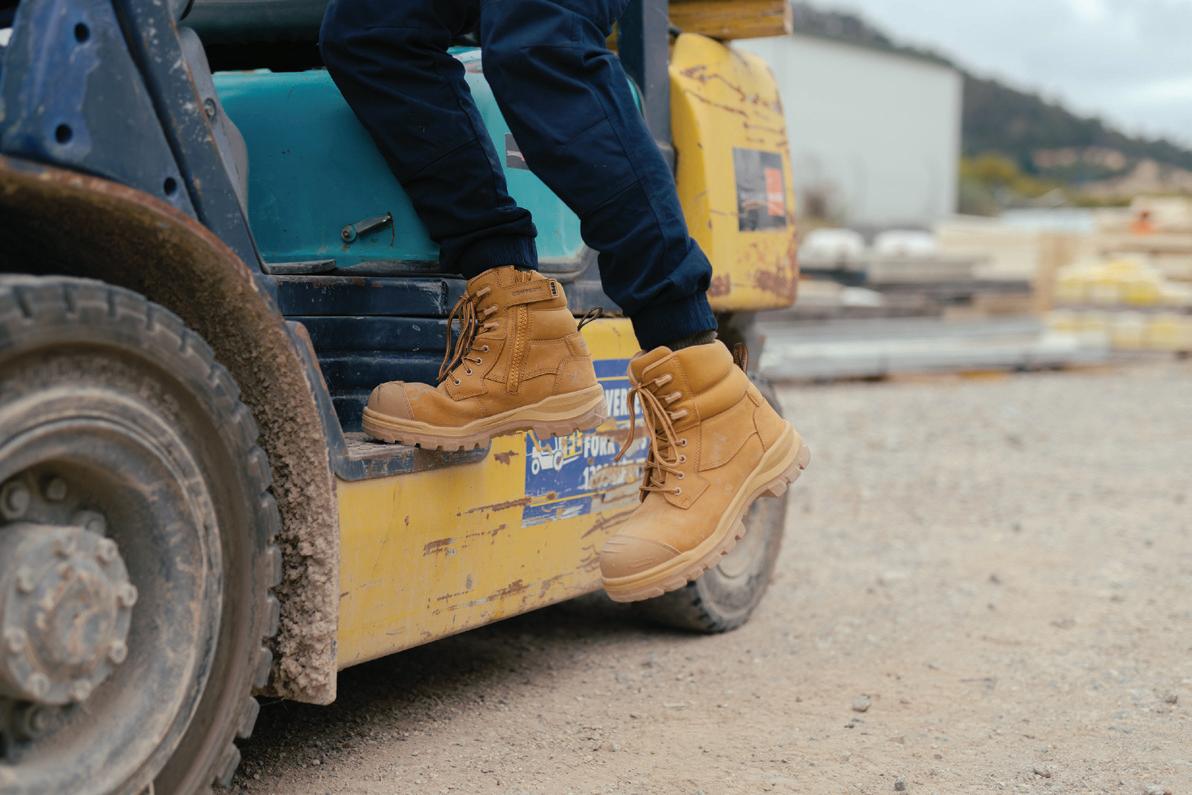
The pinnacle of Blundstone’s RotoFlex range, the six-inch, wheat nubuck #8560 is built with a biomechanically conforming sole design, GripTek, and utilises a unique TPU tread pattern and super cushioned midsole, with zoned support designed for all-day stability, comfort and grip. The sole has been designed with extra width in the heel and toe area to help stop ankle rolls, with larger cleats that are self-cleaning.
Alongside the GripTek sole is a Fortalite composite toe cap which is lightweight and com pression-resistant. The #8560 also features a zoned airflow footbed, AirCell, that is constructed with specialised zoning, designed to activate ventilation, allowing air to be pumped through channels to the heel, arch of the foot and between toes, offering moisture control and cushion ing comfort as the wearer walks and moves.
The overarching comfort system, SoftCell, utilises a combination of specialist materials and a biomechanical foot-cradling design to increase stability, balance, comfort and manoeuvrability, while reducing ankle slip risk and fatigue. The safety boot also incorporates Infinergy, an E-TPU super elastic energy foam from BASF, providing enhanced cushioning.
Blundstone Australia Pty Ltd www.blundstone.com.au
EXAIR’s High Lift Reversible Drum Vac is suitable for the safe recovery of fluids like coolant, hydraulic oils, sludge and chips, wastewater, tramp oil and liquid spills. The product’s high-powered vacuum is able to lift thick liquids up to 1400 cP to a height of 4.6 m, filling a 205 L drum in less than 85 s. With the turn of a knob, the same stainless steel pump can quickly empty the drum. The flow rate in and out of the drum can be controlled with the knob, making it suitable for dispensing liquids.
Electrically operated all-purpose vacuums aren’t designed for use in industrial environments and as a result, motors wear out quickly and impellers clog. Powered by compressed air, this vacuum has no moving parts, no electric motor to wear out and has no impellers to clog, assuring maintenance-free operation. It is designed for con tinuous and heavy-duty applications where electric vacuums fail due to motor wear or clogged impellers. It can also be used for lighter-duty applications.
It is CE compliant, has built-in pressure/vacuum relief and attaches quickly to closed head 205 L drums. An automatic safety shut off valve prevents spills or overfilling.
Compressed Air Australia Pty Ltd www.caasafety.com.au
12 SAFETY SOLUTIONS NOVEMBER 2022 www.safetysolutions.net.au
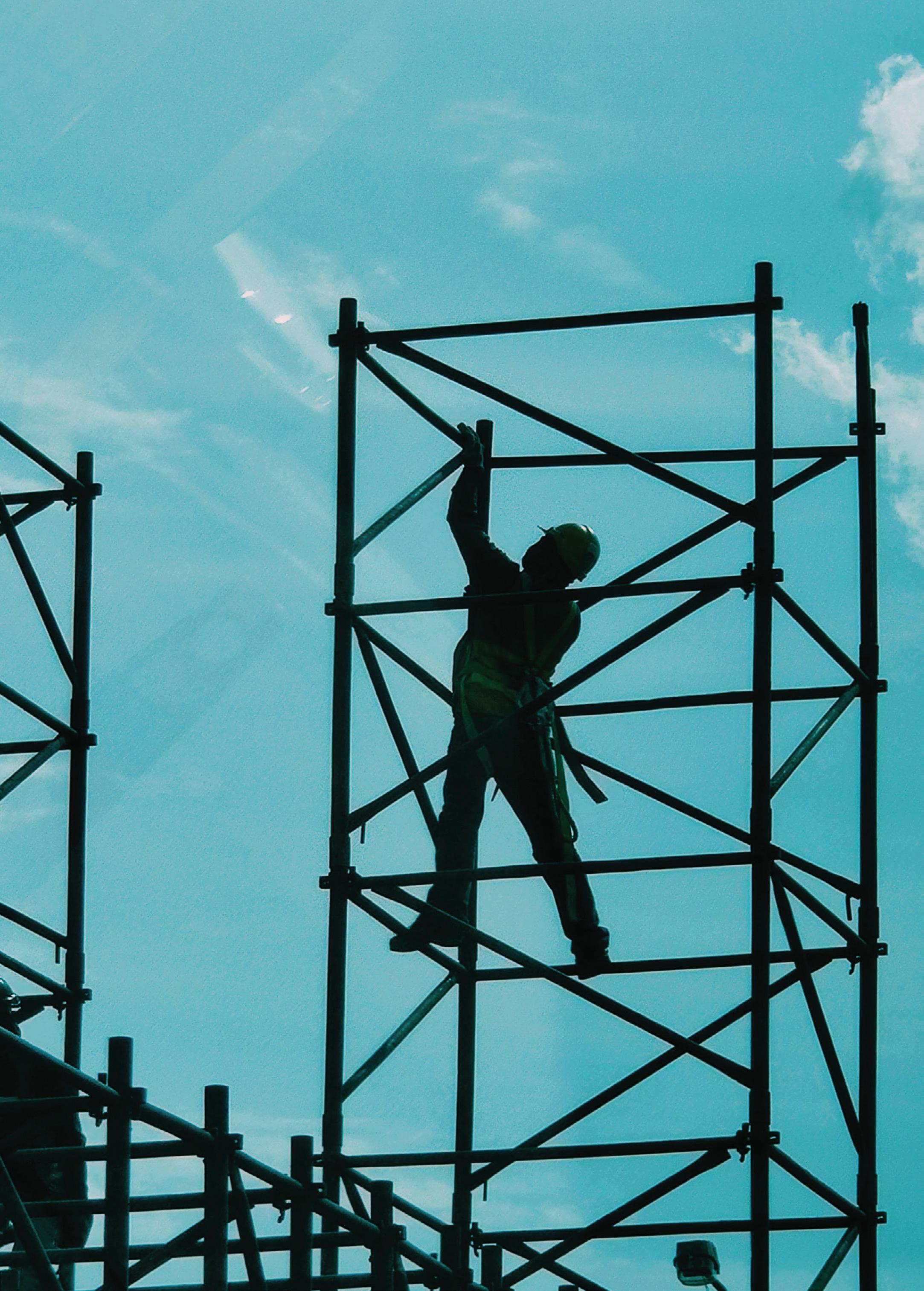

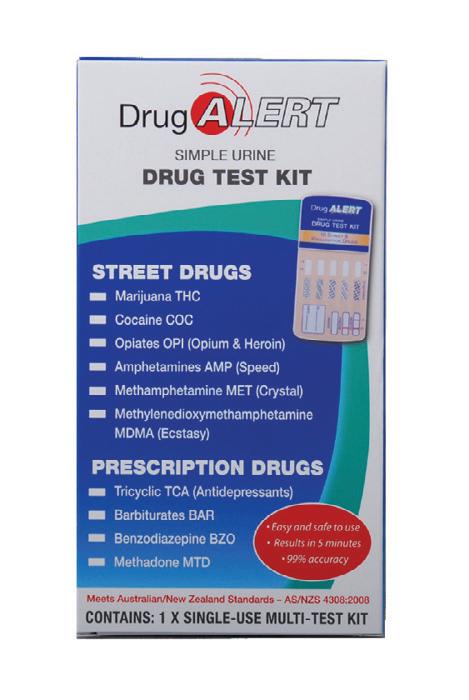



Women’s scuff cap safety boot
Trading Downunder has expanded its range of women’s safety footwear styles to meet the growing demand for stylish, comfortable work shoes and boots for women.
Apart from sports style shoes, Puma Safety is also now available in ladies sizing in the popular scuff cap range.
The Conquest is a fully waterproof, zip-sided safety boot which is available in Wheat or Black colour. It features a premium nubuck leather upper, combined with a breathable water proof membrane. The Conquest also has an anti-perforation midsole for increased protection against sharp objects such as nails or glass.

Another scuff cap boot now available in women sizes is the Tornado style, a zip-sided safety boot for those not requiring a waterproof work boot. The Puma Safety Tornado is available in water-repellent Wheat or Stone nubuck leather uppers.
Certified to Australian Standards AS 2210.3:2019, the Conquest and Tornado are both electrical hazard rated, featuring a 300°C heat- and slip-resistant rubber outsole, as well as a lightweight fibreglass toecap.
Trading Downunder www.tradingdownunder.com.au
Hybrid safety glove
ATG Intelligent Glove Solutions has released the MaxiDex hybrid glove, combining mechanical han dling gloves and disposable gloves for enhanced comfort. The hybrid gloves are certified to EN ISO 374-5 VIRUS and incorporate a virucidal, ViroSan, within the coating to protect workers’ hands and their overall health. ViroSan is designed to prevent the spread of viruses that may deposit on the glove surface and has been successfully tested against NL63, the human strain of COVID.

With all-day use in mind, the hybrid gloves include AD-APT cooling technology to keep workers’ hands cool, dry and productive. The hybrid gloves are also touchscreen compatible, allowing workers to conduct daily tasks without the need to remove the gloves. The hybrid gloves are also ultra-thin for maximum comfort and dexterity.
The hybrid gloves can be laundered up to three times at 40°C, providing a longer usable life of the glove and thereby reducing waste. The hybrid gloves are suitable for multiple applica tions and can be purposed for a variety of functions including assembly works, laboratories, janitorial, hospitals and hospitality, mechanical works, warehousing, horticulture and aged care. Mayo Hardware Australia www.mayohardware.com.au
Next gen DMR radio terminals
Hytera, a leading provider of professional communications equipment and solu tions, has launched its next generation H Series of DMR terminals, designed to meet and exceed the complex and de manding communication challenges fac ing public safety, energy, transportation, utilities, commercial and other industry verticals. The newly developed hardware platform and software architecture deliv ers improved radio performance and optimises the user experience to provide more intuitive, practical and easy-to-use functionality. This allows users to focus on the task in hand and provide bet ter, safer and more efficient outcomes for the organisations and communities they serve.
The hand-portables comprise the HP7 Series (HP78X/HP70X) and the HP6 Series (HP68X/HP60X) radios. They are more compact, lighter and deliver increased battery capacity and battery life. The radios provide enhanced audio clarity and loudness, due to a combination of high-performance speakers and DSP algorithm, while embedded AI noise cancellation makes the audio even clearer.
Other innovations include using the vibration of the speaker to expel water through a specially designed cavity, for clear audio in torrential weather. Direct mode communication range is extended by 25% in open environments, while signal quality is improved at the edge of the network when in trunking mode.
The HM87X mobile radio delivers similar performance enhancements as the port able terminals. New highlights include an optimised control head-mounting solution that supports flexible deployment options. The inclusion of an Ethernet port allows the radio to function as a gateway for narrowband networking, while also sup porting the addition of new features from third-party companies and platforms.
The HR106X compact digital repeater completes the latest line-up. Hytera has integrated a telephone gateway, router and power adapter inside the repeater for an all-in-one solution.
Hytera Communications Co. Ltd www.hytera.com.au
14 SAFETY SOLUTIONS NOVEMBER 2022 www.safetysolutions.net.au
DO YO U K N OW THE D IFFE R E N C E ?
WH AT I S CA RDI AC AR RES T ?
Cardiac arrest occurs when an electrical malfunction of the hear t causes it to suddenly stop beating.
SYM P T O M S
Symptoms of cardiac arrest come on ver y suddenly A victim of cardiac arrest will collapse and lose consciousness. Victims have no pulse and will be gasping or not be breathing. Without treatment, death can occur within minutes. Cardiac arrest victims should be connected to an automated external
WH AT IS A HEA R T AT TA C K ?
A
SYMPTOM S
Symptoms of a hear t attack can var y, sometimes coming on suddenly and sometimes star ting slowly and persisting for hours, days, or weeks. They can include pain or discomfor t in the chest, back, or jaw; shor tness of breath; cold sweats; and/or nausea and vomiting. Unlike with cardiac arrest, the hear t does not usually stop beating.
An AED can analyse a person’s hear t rhythm to determine whether an electrical shock is needed a shock, but in all cases, the rescuer should per form cardiopulmonar y resuscitation (CPR).
WH A T CAN YO U D O T O HEL P ?
C A LL FO R H EL P
Contact emergency ser vices immediately
P ER F ORM H I GH -QU A LITY C P R
Push hard and fast on the chest to help move blood through the hear t into the rest of the body Aim for 100 120 compressions per minute with a depth of 5 6 cm
USE A N AE D
If it’s available, and administer a shock if necessar y. If no AED is available, continue CPR until emergency medical ser vices arrive
Medical
All rights reser ved.
is a
C A LL FO R H EL P
Contact emergency ser vices immediately
C H EW A N D S WALL O W AS P IR I N
If they are not allergic, tell the person who may be having a hear t attack to chew and swallow aspirin.
S TA R T C P R IF T H E P E R SO N
B ECOMES UNC O NS C I O U S
Pushing hard and fast on the chest to help move blood through the hear t into the rest of the body
If the ar ter y is not unblocked quickly, the section of the hear t not receiving oxygen-rich blood because of the blockage begins to die. The longer a person goes without treatment, the greater the damage can be. Make ZOLL
hear t attack occurs when blood flow to the hear t is impeded due to a blocked ar ter y.
Copyright © 2022 ZOLL
Corporation.
ZOLL
registered trademark of ZOLL Medical Corporation in the United States and/or other countries. All other trademarks are the property of their respective owners.
Malf u
E lectrical
nctio n B locked A r te r y
your AED rescue partner. For more information contact us on 1800 605 555 or visit www.zoll.com/au
THE ONGOING DANGERS OF SILICA DUST
Amy Steed
More than half a million Australian workers are currently exposed to harmful silica dust, with as many as 10,000 now predicted to develop lung cancer in their lifetimes.
Crystalline silica (silica) is found in stone, sand and mor tar, as well as many building and construction products. Engineered stone used mainly for kitchen benchtops is a particularly potent source of silica dust.
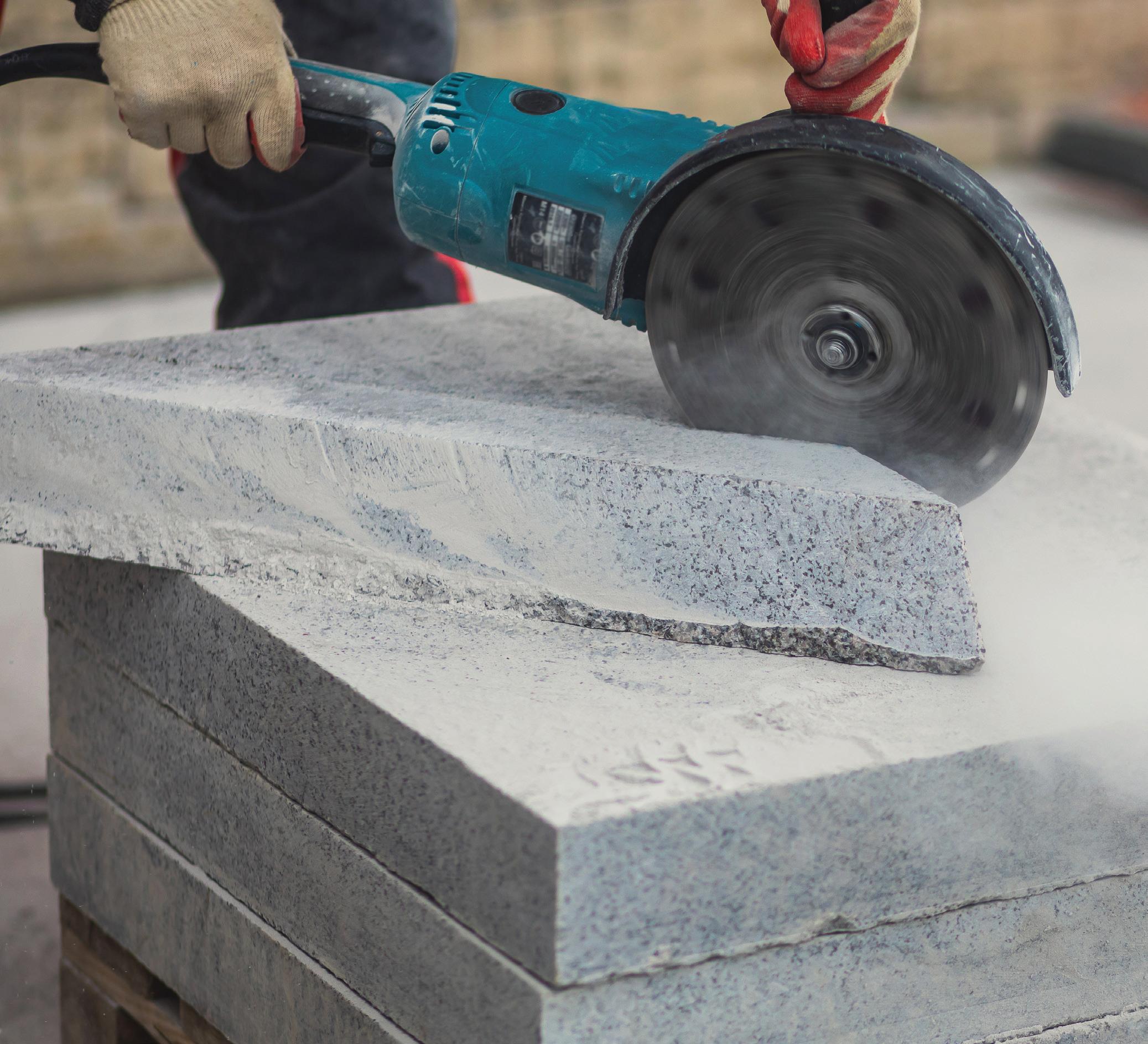
According to Safe Work Australia, when workers cut, crush, drill, polish, saw or grind products that contain silica, dust particles are generated that are small enough to lodge deep in the lungs and cause illness or disease including silicosis. The International Agency for Research on Cancer classified crystalline silica as a Group 1 (definite) carcinogen in 1997 and 2012.
Over the past 60 years, silicosis was a very rare occurrence in Australia, but the increased use of engineered stone in kitchen benchtops is driving a re-emergence of the disease. This prompted the Australian federal government to set up the National Dust Dis eases Taskforce. Safe Work Australia also released a Consultation Regulation Impact Statement that proposed options for managing the risks of exposure.
As the result of a study commissioned by the Australian Coun cil of Trade Unions (ACTU), Curtin University researchers used a unique method to predict how many Australians would develop lung cancer in their lifetime as the result of their exposure to silica dust in a specific year.
What does the modelling suggest?
Lead researcher Dr Renee Carey, from the Curtin School of Popula tion Health, said the modelling provided the best available estimate of the future number of lung cancer and silicosis cases that would result from workplace exposure to silica.
“Our modelling predicts more than 10,000 Australians will de velop lung cancer and up to 103,000 workers will be diagnosed with silicosis as the result of their current exposure to silica dust at work,” Carey said.
“We estimated that more than half a million Australian workers are currently exposed to silica dust across various industries, includ ing construction, mining and quarrying, and manufacturing jobs.”
Banning engineered stone
The ACTU has called for the implementation of a full ban on high silica content engineered stone.
“At least 230 workers a year are being diagnosed with silicosis many as young as 25. It’s 2022 and we’re seeing an increase in workers dying from entirely preventable occupational lung dis eases,” said ACTU Assistant Secretary Liam O’Brien in April 2022.
“Every worker has the right to healthy, safe and secure work. That means a workplace free of mental and physical hazards and
16 SAFETY SOLUTIONS NOVEMBER 2022 www.safetysolutions.net.au
where workers can, without fear, raise concerns about unsafe practices.”
John Curtin Distinguished Professor Lin Fritschi also from the Curtin School of Population Health agreed that banning engineered stone would save lives, and said that almost 100 lung cancers and a thousand silicosis cases could be prevented.
“While a complete ban of engineered stone would be the best option, it is possible to reduce the health impacts of working with engineered stone by various methods such as mandatory wet-cutting or on-tool dust extraction, as long as these methods are combined with the consistent use of high-quality respiratory protection,” Fritschi said.

“The damage from other types of silica-containing materials could be reduced by using better dust suppression techniques on mine and construction sites, and using wet-cutting during concrete cutting and grinding.”
The rate of occupational cancer
By estimating how many of Australia’s adult population in 2016 were exposed to silica dust at work, and then modelling the number of lung cancer cases that would occur over their lifetime, the Curtin research team was able to predict that 1% or 10,390 of those
lung cancer cases could be attributed to a person’s occupational exposure to silica dust. Carey said further research was needed and better estimates may be possible as new information becomes available.
Control measures to reduce the risks
According to Safe Work Australia, there are several control meas ures for reducing the risks associated with silica.
• Elimination: Completely removing the hazard from a workplace, where reasonably practicable.
• Substitution: Replacing silica and products containing silica with material that is less hazardous.
• Isolating workers and others from silica dust: Placing a barrier between workers and the hazard.
• Engineering controls: Physical methods to change the char acteristics of a task, such as using automation when cutting, grinding or drilling.
• Ventilation: Using a ventilation system that best suits the work place, such as tool dust extraction.
• Engineering controls for silica-containing products: Even when wet methods are used, silica dust is not always adequately controlled, and silica-contaminated mist generated by water on rotating tools must also be controlled.
• Administrative controls: These rely on worker behaviour and should only be used to provide additional protection after implementing substitution, isolation and engineering controls.
• Administrative controls when working with silica-containing products: Organisations need to develop and implement admin istrative controls to support the higher level control measures they have in place to protect workers.
• Training: Talking to workers about silica dust hazards, and providing the correct training.
• Housekeeping: Developing written rules and policies for the workplace is a good way to implement housekeeping as an administrative control.
• Decontamination: Dusty clothing and PPE can expose workers and others to silica dust, and it is important to minimise this exposure.
• Personal protective equipment: This should never be solely relied upon to protect workers from silica dust, and should only be considered after implementing substitution, isolation, engineering and administrative controls.
• Respiratory protective equipment: Workers should use a tightfitting respirator with an effective face seal to protect against small silica particles.
• Fit testing respiratory protective equipment: Fit testing meas ures the effectiveness of the seal between the respirator and the wearer’s face, and workers should pass a respirator fit test before they first start wearing a tight-fitting respirator.
• PPE when working with silica-containing products: Respiratory protective equipment is not enough to protect workers from silica dust. A combination of controls is required to protect workers’ health, including engineering, isolation, work practices, personal protective equipment, worker training and consultation. Selected PPE must also be appropriate for other risks when working with silica, such as eye, hand or hearing protection.
NOVEMBER 2022 SAFETY SOLUTIONS 17 www.safetysolutions.net.au
SILICA EXPOSURE
iStock.com/Nikolay Tsuguliev
Ensuring proper head protection is therefore a critical component of helping to keep workers safe on the job. After all, the head houses one of the most important organs in the human body: the brain. Below are some top tips for selecting the correct PPE that workers will want to wear all shift long.
1. Ensure comfort
When selecting head protection such as a hard hat or a safety helmet, the first necessity of all PPE is that it provides the requisite level of protection for the task at hand. However, PPE only works to protect users when it is worn properly. So, it is imperative to select headgear that workers will be comfort able wearing for an entire shift. Opt for head protection that incorporates comfortable padding and allows for suspension height adjustment, because one size does not always fit all.
Handy hints
TOP TIPS: SELECTING SAFETY HEADGEAR FOR CONSTRUCTION SITES

Priyal Saswade, Business Leader for Honeywell Personal Protective Equipment, Asia Pacific
Across the spectrum of jobs on construction worksites, workers face many hazards that can lead to injury and can sometimes even be fatal. Among those hazards, construction sites expose workers to dropped objects, impacts and bumps to the head on equipment and machinery.
exposure to heat can affect worker health, safety and productivity. PPE that allows proper airflow and ventilation is key to helping workers stay cool.
• Opt for head protection that incorporates comfort able padding and allows for suspension height adjustment.
When selecting head protection for outdoor construction workers who may be more susceptible to heat stress, employers should supply light-coloured hard hats for their employees to help protect from heat hazards. Lighter coloured hard hats, such as those that are white, help keep workers cool by reflecting light from the sun away from the head. High-visibility colours on the other hand, such as orange, can attract and retain heat.
• Choose lighter coloured hats that allow proper airflow and ventilation to help keep the head cool in heat.
• High-visibility hat colours, such as orange, can attract and retain heat.
• Lightweight shell designs can help to eliminate neck fatigue during long shifts.
2. Reduce the risk of heat stress
As the hot days of spring and summer bear down, workers who are exposed to excessive heat while undertaking strenuous work are at risk of heat stress. If the body is not able to regulate the internal temperature fast enough, this can lead to heat-related illnesses such as heat exhaustion or heat stroke. When carrying out physical tasks in a hot and/or humid environment, there is also a risk that workers may seek comfort by taking off layers of clothing or equipment which can lead to cutting corners in safety. Preventing heat stress in workers is important, as excessive
3. Minimise worker fatigue
Many workers often consider PPE as an extra layer they are required to wear for compliance, and when workers spend their days engaging in strenuous activi ties, they do not want their gear weighing them down. Since the main purpose of PPE is to be protective, it can sometimes mean that heavy materials are used. When selecting headgear, compare options to find those with lightweight shell designs to eliminate neck fatigue during long shifts.
Head to toe safety starts at the top
With the multitude of hazards present on a construction site, having the right head protection is necessary. By selecting head protection that keeps comfort and worker well-being top of mind, workers can remain protected when and where they need it most.
Honeywell Ltd www.honeywell.com.au
18 SAFETY SOLUTIONS NOVEMBER 2022 www.safetysolutions.net.au
SAFETY HEADGEAR


COOL, DRY
PRODUCTIVE ATG ® MaxiFlex ® Ultimate ™ gloves provide the solution to improve production efficiencies through increased flexibility, comfort and precision handling. atg-glovesolutions.com
KEEPING HOT HANDS
&
Inline regulator
Easily installed on any ¼ ″ air blow gun or pneumatic tool, the small and compact Protect-Air CartReg inline regulator is designed to be tamperproof and is an economi cal way to maintain specific pressure requirements.

Pressure values are factory set and cannot be changed, providing air tool efficiency by supplying a constant preset pressure. This prevents compressed air waste and limits excessive compressed air consumption, thereby reducing energy costs.
The inline regulator has been engineered to comply with various international safety agency requirements and meets OSHA requirements for 2 BAR maximum pressure for pneumatic air guns. It protects personnel, machinery and plant by avoiding pres sure surges.
Available in preset pressures from 2 to 8 bar, applications include air blow guns, spray guns, workshop air lines, pneumatic tools and general pneumatic applications. Compressed Air Australia Pty Ltd www.caasafety.com.au
Compact safety switch
Treotham has released Euchner’s innovative FlexFunction CTS safety switch; the guardlocking device features a high locking force, compact design and enhanced flexibility, making it suitable for applications requiring a high locking force in a confined space.

Measuring 135 x 31 x 31 millimetres in size, it delivers a locking force of 3900 N for universal use. The CTS can be mounted in three orientations, permitting flexible use for hinged and sliding doors. An escape release can also be added at any time. Featuring the benefits of Euchner’s transponder-coded safety switches with guard locking, the Flex Function CTS combines multiple functions in a single device that are otherwise only available in separate variants. The CTS is available with or without guard lock monitoring, with actuator code evaluation or with high or low coding levels. Functions are selected via the matching actuator. The CTS also offers various connection options.
Treotham Automation Pty Ltd www.treotham.com.au
Topcoat system

A&I Coatings has developed a complete paint system that helps to reduce workplace exposure to harmful chemicals and increase efficiency in the spray booth.
The Vitrephos 560 Primer and Vitrethane 650 topcoat is designed to speed up throughput times during application. The V560 Primer and V650 topcoat system has good wet-on-wet properties, with easy sanding and efficient drying properties — especially in cold weather — and effective film build which has seen a reduction of work hours required to complete works.
Vitrethane 650IF is a quality twopack isocyanate-free polyurethane topcoat. Utilising full polyurethane technology (now patented) and curing without the use of isocyanates makes Vitrethane 650IF a safer and more durable coating than conventional isocyanate-free coatings.
Vitrethane 650IF is a high-gloss, versatile polyurethane topcoat with good durability and weathering per formance, as well as improved impact resistance and abrasion resistance.
Vitrethane 650 also reduces labour hours due to its high coverage and offers good gloss retention to finish.
Exposure to isocyanates is known to cause both respiratory illness and skin irritation, such as allergic contact dermatitis.
A&I Coatings www.aicoatings.com.au/
20 SAFETY SOLUTIONS NOVEMBER 2022 www.safetysolutions.net.au




NOVEMBER 2022 SAFETY SOLUTIONS 21 www.safetysolutions.net.au PALLET RACKING PROTECTION • www.rackarmour.com.au • t: (02) 9722 0502 • e: info@rackarmour.com.au Rack Armour is the simple superior solution to pallet racking damage caused by forklifts. Rack Armour is a patented product, locally manufactured and internationally recognised. RACK ARMOUR 600mm RACK ARMOUR PALLET RACKING PROTECTION, also available in 400mm

22 SAFETY SOLUTIONS NOVEMBER 2022 www.safetysolutions.net.au
IN THE FIELD IMPROVING FATIGUE MANAGEMENT IN CONSTRUCTION
FATIGUE
iStock.com/dusanpetkovic
Nick Crawford,
Practice Manager – ANZ/SEA, UKG
Beyond just feeling tired, fatigue makes it impossible for workers to carry out their duties safely. It can reduce reaction times, increase the potential for error and cause workers to take dangerous shortcuts.1
Construction firms have a duty of care to their employees to manage fatigue effectively to minimise the risk of harm.
However, without clear visibility into the root causes and key patterns behind fatigue, construction firms can strug gle to tackle this issue effectively. Failure to address the underlying factors that result in employees feeling fatigued can cause construction firms to experience significant negative repercussions. In addition to the immediate impacts, such as injuries, incidents and worker fatalities, construction firms can face longer-term consequences. These include worker absenteeism, inability to retain employees, lack of compliance leading to fines and reputational damage. Each of these can incur lost productivity and significant financial-related costs that impact the profitability and performance of an organisation.
Fatigue often creeps up on an individual people don’t tend to wake up one morning and declare themselves fatigued. Instead, this insidious condition builds slowly until it culminates in an accident or incident. This means that construction firms must find a way to mitigate fatigue before it becomes tragically apparent.
Fortunately, there are workforce management tools that con struction firms can use to manage fatigue risk effectively. There are three critical ways that construction firms can proactively manage the risk of fatigue:
1. Managing the hours an employee works
Construction workers have a minimum shift time of three hours and are entitled to a minimum of 12 hours between shifts. 2 This means that an employee who finished work at 6:00 pm should not start work again the next day before 6:00 am. This is so the employee can get adequate rest and personal time.
It’s also important to consider the amount of overtime an employee has worked before creating the next set of rosters. A construction worker who has completed excessive overtime one week may need to be scheduled to work fewer hours the following week to give them a chance to recover.
While this may seem like common sense, it can be hard to manage without visibility and intelligent workforce management tools. And, the larger the organisation, the harder it can be to gain insights into which employees are working too hard or too often.
2. Gaining insight into fatigue-related trends
There are certain trends that can indicate fatigue within the workforce, including increased absenteeism, excessive overtime, numerous overnight or otherwise demanding shifts, errors and more.3 For example, construction workers who work long days during the summer heat can be susceptible to fatigue due to the challenging conditions. Construction firms and forepersons are often aware of this risk and may schedule additional breaks for workers to rehydrate and cool down. However, prolonged exposure to these working conditions can lead to fatigue, so it’s important to be proactive in dealing with these risks.
Getting an overarching view into these trends and risk factors is crucial for construction firms to make smart decisions to mitigate
fatigue risk. Real-time, on-demand analytics let decision-makers easily visualise individuals and departments at an elevated risk of fatigue.
3. Alerting managers when fatigue risk increases
In an ideal world, all managers would proactively monitor their team members for signs of fatigue however, this isn’t always feasible in the construction industry. Therefore, it’s important to implement a system that not only proactively notifies managers if their team members are facing an increased level of fatigue, but also allows employees to manage their own fatigue. With proactive notification based on overtime limits and rest violations, managers can act quickly to reduce the factors causing fatigue. Using a mobile application, employees can proactively request time off or swap shifts to reduce their own fatigue. The short-term cost of giving an employee a day off to recover from a long shift significantly outweighs the cost of an incident, should one occur.
Construction firms can take this proactivity a step further by implementing rostering systems that don’t allow them to schedule people to work if they face a higher risk of fatigue, or provide warnings when people are reaching fatigue limits. For example, suppose someone has completed excessive overtime, had a number of shifts with insufficient rest in between, or worked an unac ceptable number of consecutive days. In that case, the system can prevent them from picking up additional shifts or hours. This helps the construction firm satisfy its duty of care to employees and avoid unintentionally exposing them to high fatigue risk levels.
As the construction sector continues to bounce back, unem ployment remains historically low, and employee retention is critical. It is therefore important for construction firms to fulfil their duty of care to employees and, where possible, provide an exceptional employee experience. Managing fatigue risk ef fectively benefits employees and construction firms, so it makes sense for them to focus on and improve this area. By reducing the risk and likelihood of fatigue, construction firms can not only protect the health and safety of their people, but also reduce costs associated with absenteeism, staff turnover, incidents and accidents, and non-compliance. Construction firms should consider implementing sophisticated workforce management solutions to proactively address fatigue risk and provide a more engaging employee experience.
1. https://www.safeworkaustralia.gov.au/safety-topic/hazards/fatigue/overview
2. https://lawpath.com.au/blog/a-guide-to-the-minimum-hours-for-shift-work-inaustralia#:~:text=As%20per%20Australian%20maximum%20working,of%20 12%20hours%20between%20shifts
3. https://www.safeworkaustralia.gov.au/safety-topic/hazards/fatigue/overview
UKG www.ukg.com/en-AU
NOVEMBER 2022 SAFETY SOLUTIONS 23 www.safetysolutions.net.au
MANAGING FATIGUE
SAFETY WEARABLES RESULTS IN A REDUCTION IN ERGONOMIC INJURIES & CLAIMS

UFA Co-operative Injury Reduction Case Study
Changing the movement behavior of workers in manual handling industries is key to reducing ergonomic injuries and claims. This is what one of Canada’s largest and most dynamic farm and ranch supply operations and petroleum distribution networks strongly believes in.
Like most safety-conscious organizations, UFA Co-operative consistently develops safety programs and although all solutions have been beneficial, they found them to be short-term and unsustainable for the tenured or new workers.
Virginia MacKay, Incident Investigations Specialist & Senior H&S Advisor at UFA was challenged by their distribution center to come up with ways that could improve their claims history when it came to worker injuries. Specifically, at distribution, the claims typically were all about ergonomics, neck strains, back strains, and pulled shoulders.
When investigating the root cause of why these incidents happen, Virginia believed it is because of behavior and says, “The behavior and the complacency that’s in place is where the problems stem, so for one to change the complacency or change
the behavior, you have to work on changing habits, re-elevate your existing program, and start thinking more proactively.” After researching, UFA landed on the SoterCoach wearable technology solution offered by Soter Analytics.
The Solution
The SoterCoach solution consisted of a small self-attaching clip-on device that is put either on the collar of a shirt for spine safety or connected to an arm strap for shoulder safety.
The sensors captured and alerted the workers via real-time audible and vibration feedback to any high-risk spine movements including, lumbar flexion, rotation, static postures, and repetitive movements, and identified any high-intensity movements. The shoulder sensor detected the cumulative risk of arm elevations, repetition, static, overexertion, and hazardous pushing and pulling of the shoulder.
All movement data was fed back to a personal companion app where workers could view their own results and follow micro-learning manual handling tutorials. An online management dashboard provides insight into where the risks are in the organization.
24 SAFETY SOLUTIONS NOVEMBER 2022 www.safetysolutions.net.au
SPONSORED CONTENT
The behavioral change aspect of the sensors’ real-time biofeedback encouraged each worker to internally learn new and correct movement patterns, altering neuromuscular pathways and resulting in permanent movement change.
In November 2021 UFA rolled out the program on their pickers, sorters, and receivers at their DC, and then due to the success continued in their retail stores, yard areas, bulk petroleum, and card lock facilities.
The results
The results have easily justified the program with the longitudinal data showing that in 2021, before introducing Soter, the number of injuries and claims was consistently increasing. In Dec 2021 after Soter was implemented, there is a plateau in both claims and injuries resulting in:
• 86% Reduction in Ergonomic injuries
• 67% Reduction in recordable workers' compensation claims (WCB)
• 43% Overall improvement in the number of spine hazards per hour
• 86% Reduction in total ergonomic injury costs* with an 11 x Return on Investment.
In addition to the direct cost savings for reduced WCB claims, UFA is also trending towards a reduction in their WCB premium, which is based on the last 3 years of claims.
Direct cost savings to UFA included:
• Reduced hazardous movements reduced biomechanical risk reduced risk of injury
• Reduced the cost of manual handling training

• Reduced the requirement of observation/supervision of employees
• Profiling of hazardous tasks (task risk assessment) for their further elimination
• Reduction of claims costs & lost workdays
Priceless contributions include: • Reduction of claims costs & lost workdays • Employee empowerment and autonomy • Proactive insight into work done in the workplace • Improved lifting techniques outside of work (24/7)
Worker feedback
Several workers indicated that when the device alerted them it made them stop and try to figure out what they were doing wrong.
“The Soter device I wore for the 10 days was great. In the beginning it would beep a lot but tapered off towards the end of the 10 days. I knew I was improving. It really did help me on how to bend properly and how to pick up things along with posture and twisting. It was good to see how well I did.
“I truly believe that everyone should wear the Soter device because it helps you learn and understand how much pressure we put on our backs every day. The tutorials were a nice added touch with valuable information. I can now self-trigger myself when I am about to lift anything and it’s all thanks to the device.
“I found myself stopping when the device beeped to try to figure out what I was doing wrong.”
The data
The data collected by the devices was displayed on an online dashboard for management and was able to show UFA what site, departments, job roles and movements were at highest risk, and where to focus their attention.
They narrowed down which workers needed support by clear visuals on aggregated pages and individual reports.
“We all know that changing habits takes constant nagging reminders and it is easier said than done. The Soter devices and the SoterCoach tutorials offered a great way to help our workers be more aware of the hazardous movements they were making and to self-trigger right away when the device is alerting them,” says Virginia.
Soter Analytics Pty Ltd soteranalytics.com

NOVEMBER 2022 SAFETY SOLUTIONS 25 www.safetysolutions.net.au
iStock.com/ljubaphoto
CASE STUDY
Smart wearables trialled for water worker safety
Wristband sensors, smart shirts and other devices are being trialled by SA Water’s field-based staff.
Taking part in a pilot study by researchers from the University of South Australia, 15 staff members from SA Water’s Kadina Depot and Trade Waste and water sampling teams will don these smart wearable devices to capture physiological data in the field.

This in turn will identify opportunities for early detection and intervention on potential safety issues, and demonstrate how technology can lead to greater health and wellbeing outcomes.
SA Water’s General Manager of People and Safety, Kylie Johnson, said the safety initiative could have broad application across its state-wide workforce.
“With a vast water network, our people are often performing challenging physical tasks in a range of weather conditions and our trial will explore how technology can improve their health and wellbeing,” she said.
“Working together with the University of South Australia, our people will undertake specific work activities, such as driving prolonged distances and pipe maintenance to explore how their bodies respond, measure their vital signs and monitor the effect of heat, fatigue and sleep.
“Excitingly, the wearable devices provide the opportunity to capture mental and physical wellbeing insights we haven’t been able to in the past.
“For example, the wristband sensors our Kadina team are wearing can quantify sleep deprivation and the resulting effect on alertness, focus and mental health.
“Biometric smart shirts with sensors embedded in the textiles monitor the cardiac and respiratory system to capture greater knowledge about physical strain.
“All of these collective insights can lead to improved situational awareness and allow certain work activities to be altered, postponed or optimised, creating better safety outcomes for our people.
“The idea to trial these devices was conceived by our own people, who over the years have seen the success of proactive measures in preventing harm during some of their daily tasks.”
The data and learnings captured by the University of South Australia will be used by SA Water to assess the feasibility of
adopting each device and help the utility understand which teams could gain value from their use on an ongoing basis.
The project’s lead, UniSA Research Professor Jill Dorrian an expert in occupational safety, fatigue and sleep said findings from the study could set a new precedent for proactive safety practices.
“Our research continues to find that issues such as fatigue and sleep are prevalent across industries and can often increase the risk of workplace incidents, but our trial could open the door for the use of innovative technologies that support an even more proactive approach to safety and wellbeing,” Dorrian said.
“Literature from researchers overseas demonstrates the use of wearable devices can increase employee satisfaction, while providing early detection and intervention for improved decisionmaking around how physical tasks are performed or managing individual workload to avoid burnout.”
University of South Australia www.unisa.edu.au
Vented hard hat
The Maxisafe Vented Hard Hat is designed and manufactured in Australia and is fully tested and certified to Australian Safety Standards by SAI Global, licence number SMK41211.

The six-point webbed harness is available in both ratchet (HVR580) or sliplock (HVS590) options for easy, secure fitting. Featuring 11 ventilation points for increased airflow, the helmet is lightweight with a streamlined design, UV- and impact-resistant ABS material and 25 mm accessory slot for earmuffs and face visors. The sweatbands are replaceable to ensure user comfort.
A full range of PPE accessories are also available to complement the helmets including earmuffs, face shields, chinstraps, sweatbands and full colour logo printing.
Techware Pty Ltd www.maxisafe.com.au
26 SAFETY SOLUTIONS NOVEMBER 2022 www.safetysolutions.net.au
Image courtesy of the University of South Australia.

Hard hats
Sureguard’s TUFFGARD BROADBRIM hard hats and CLEARVIEW BROADBRIM hard hats are designed, developed and manufactured in Australia.
The BROADBRIM hard hat design provides greater protection from the elements — which, according to the company, includes a 60% increase in brim area and 30% more protection when compared to current full brim designs. In addition, the company reports that the hat has 300% more brim area than a standard peak cap.
The TUFFGARD BROADBRIM hard hat has a removable access tab to allow for cap-attachable helmet earmuffs. These tabs can be parked in the rear of the hard hat to prevent loss.
They come in both ABS and polycarbonate materials, including solid colours.
Type 1 high-impact rated ABS is extra strong and robust, yet lightweight, and is suitable for all working conditions.
The 360 degrees broad brim design provides maximum sun and rain protection.
Featuring a rear ratchet wheel for one-handed fit adjustment, the broad brim helmet accepts most 25 and 30 mm attachments in the marketplace (cap-attachable earmuffs).
The CLEARVIEW BROADBRIM hard hat is designed so the wearer has a clear view when looking through the brim. This allows the wearer to look upwards without the need to tilt the head back, causing discomfort in the neck over a prolonged period of time. It is also UV400 stabilised and is suitable for indoor or outdoor use. UV400 polycarbonate ensures the wearer will not be sunburnt and no damaging UV rays can penetrate.

All BROADBRIM helmets are available vented or non-vented, and with metal or plastic lamp bracket versions.
BROADBRIM is tested and certified to Australian Standards AS/NZS 1801.
Sureguard Safety Australia www.sureguardsafety.com.au/
Belt installation and rotation device
Gates Australia has a range of power transmission tools available for industry that have enhanced the way belts and drives are installed and maintained. The BIRD Belt Installation and Rotation Device was developed to minimise finger and hand injuries. Hands can get caught in pinch points dur ing routine installation and maintenance. The BIRD consists of two powerful permanent magnets that can be applied directly to the shover sprocket for belt rotation and inspection, rather than manually rotating the belt by hand, which can result in injury.
The BIRD facilitates a rotational inspection of the drive while the drive is shut down and locked out.
The device also provides a more ergonomic way to rotate belt drives and features switchable on/off magnets to allow for easy installation and removal. It comes with a durable case, to provide protection when not in use.
Gates Australia Pty Ltd www.gatesaustralia.com.au
Powered air purifying respirators
Maxisafe’s CleanAIR Verus and Omnira Ready 2 Weld sets with Basic PAPR (powered air purifying respirator) provide everything in one complete package.
The Verus headtop is a lightweight, durable face shield, protecting against high-speed particles.
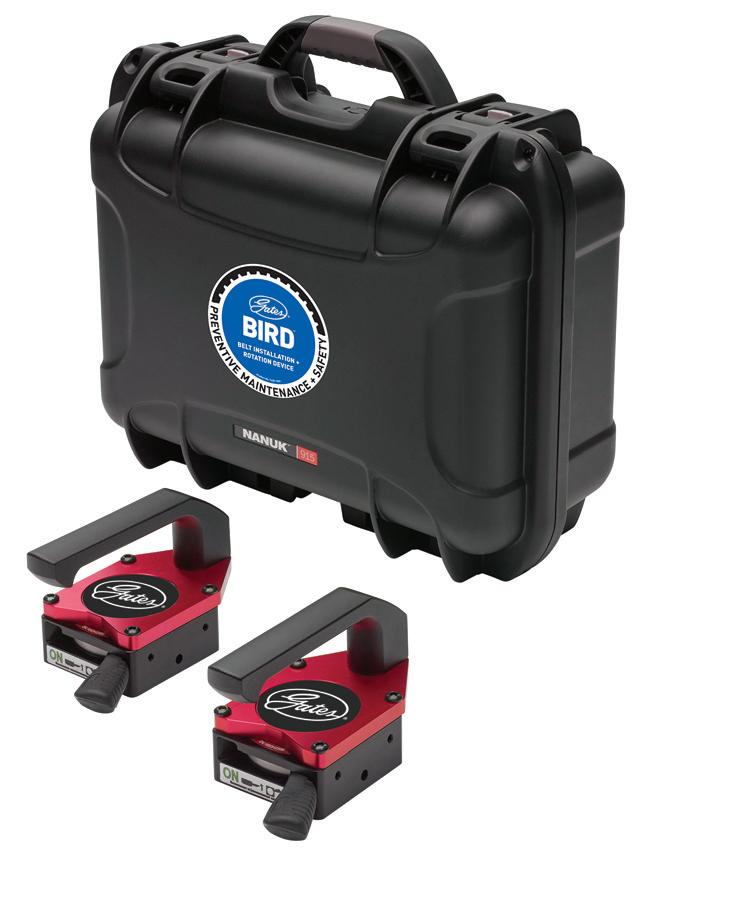

The Omnira is an auto-darkening welding helmet with an advanced, built-in air distribu tion system and flip-up welding shield. The COMBI set includes the basic powered air purifying respirator and all necessary acces sories, stored in a practical transport bag by CleanAIR.
The auto-darkening welding helmet, with flip-up welding shield, provides protection of the user’s eyes and face from harmful radia tion — including visible light, ultraviolet(UV), infrared (IR) radiation, hot sparks and spat ters resulting from arc welding and cutting. It also provides impact protection against high-speed particles.
It is designed for use with CleanAIR pow ered air purifying respirators or with CleanAIR continuous flow, compressed air breathing systems.
The CleanAIR Basic PAPR incorporates the latest technology, providing efficient protection against harmful particles such as dust, smoke, fumes and fibres. Powered by a Li-ion battery, it features electronically controlled, constant airflow and an advanced user warning system. The airflow is individually adjustable from 170 up to 240 Lpm and is easily adjusted with one button. All relevant information is clearly vis ible on the new, upgraded LED control panel.
The welding sets are suitable for many applications including welding, grinding, surface finishing operations, automotive and shipbuilding industry, agriculture, food pro cessing industry, building and construction, and woodworking. Techware Pty Ltd www.maxisafe.com.au
28 SAFETY SOLUTIONS NOVEMBER 2022 www.safetysolutions.net.au
IMPORTANT CONSIDERATIONS FOR A LOCKOUT TAGOUT SYSTEM

Lockout tagout (LOTO) is a critical safety procedure used to ensure dangerous machines and energy sources are properly shut off or isolated. It also ensures that they are not able to be restarted until any required maintenance or repair work is completed.
Technology is pushing the world along quickly, and this pace of change should influence how businesses think about LOTO in the workplace. Although many companies are prepared for the ‘now’ and have suitable safety devices and padlocks, fewer companies have considered the future. For example, when a company has ad ditional machinery in another two years, will it still have the same safety systems in place? And will it still be using a paper-based permit-to-work system? Put simply, the future is now and it is time for all organisations to begin futureproofing their systems.
Electronic permit to work (ePTW) is becoming increasingly popular on Australian worksites. ePTW enables high-quality permits that comply with company procedures. It also provides effective delegation of responsibility, notifications of deviations or exceptions, high visibility of work in progress through up-to-date communica
tion, and a complete and comprehensive audit trail. This leads to improved efficiencies and no more paper shuffling.
RFID tags can work hand in hand with ePTW. Using decodable radio signals, RFID tags can be allocated to individual isolation points in an ePTW system or database, enabling improved accuracy of isolation points and conformity to procedures.
So, here’s the question that organisations need to ask: “Is the company prepared for the future by preparing for the ‘now’?” Ef ficient, error-proof electronic systems are the way of the world.
“LOTO is an investment in your worker’s safety and your site’s ability to run effectively. It’s important to have the correct equip ment available on your site, and true cost savings can quickly be achieved through efficiencies in time and accuracy with a wellplanned, scalable, futureproofed ePTW system. Our Safesite Pro gram can assist in achieving industry-leading practice,” said Paul McGregor, National Key Account Manager Safety & Industrial, Mayo Hardware.
Blackwoods www.blackwoods.com.au
NOVEMBER 2022 SAFETY SOLUTIONS 29 www.safetysolutions.net.au LOCKOUT TAGOUT iStock.com/BulentBARIS
TAKING ACTION ON OCCUPATIONAL NOISEINDUCED HEARING LOSS

30 SAFETY SOLUTIONS NOVEMBER 2022 www.safetysolutions.net.au
HEARING LOSS iStock.com/SimonSkafar
More than 1.1 million workers in Australia continue to be exposed to harmful levels of noise in their workplace.1 Following National Safe Work month, which took place in October, Hearing Australia is urging work ers across all industries to protect their ears from dangerously loud sounds.
According to the World Health Organization (WHO), 2 noise exposure contributes to 22% of workplace-related health issues. In Australia, hearing loss due to excessive noise from machinery and power tools is one of the most widespread, yet preventable, workplace injuries.3
“The workplace is one of the most common sources of noise-induced hearing loss (NIHL). However, this is by far the most preventable kind of hearing loss,” said Karen Hirschausen, Hearing Australia Principal Audiologist.
“Workplace noise can and should be managed by implementing a range of control methods and that can be as simple as limiting time spent in noisy en vironments, using quiet equipment and ensuring you wear appropriate hearing protection.
“People often ask ‘what’s too loud?’ Essentially, if you’re in a situation where you need to raise your voice to be understood at conversational distance (1–2 metres), then the noise is probably too loud. Repeated or lengthy exposure to sounds above 85 decibels, which is approximately the level of a forklift or front-end loader, can cause permanent damage.”
According to Safe Work Australia 4 , the sectors with the highest rates of workers compensation claims due to occupational hearing loss are construction and manufacturing.
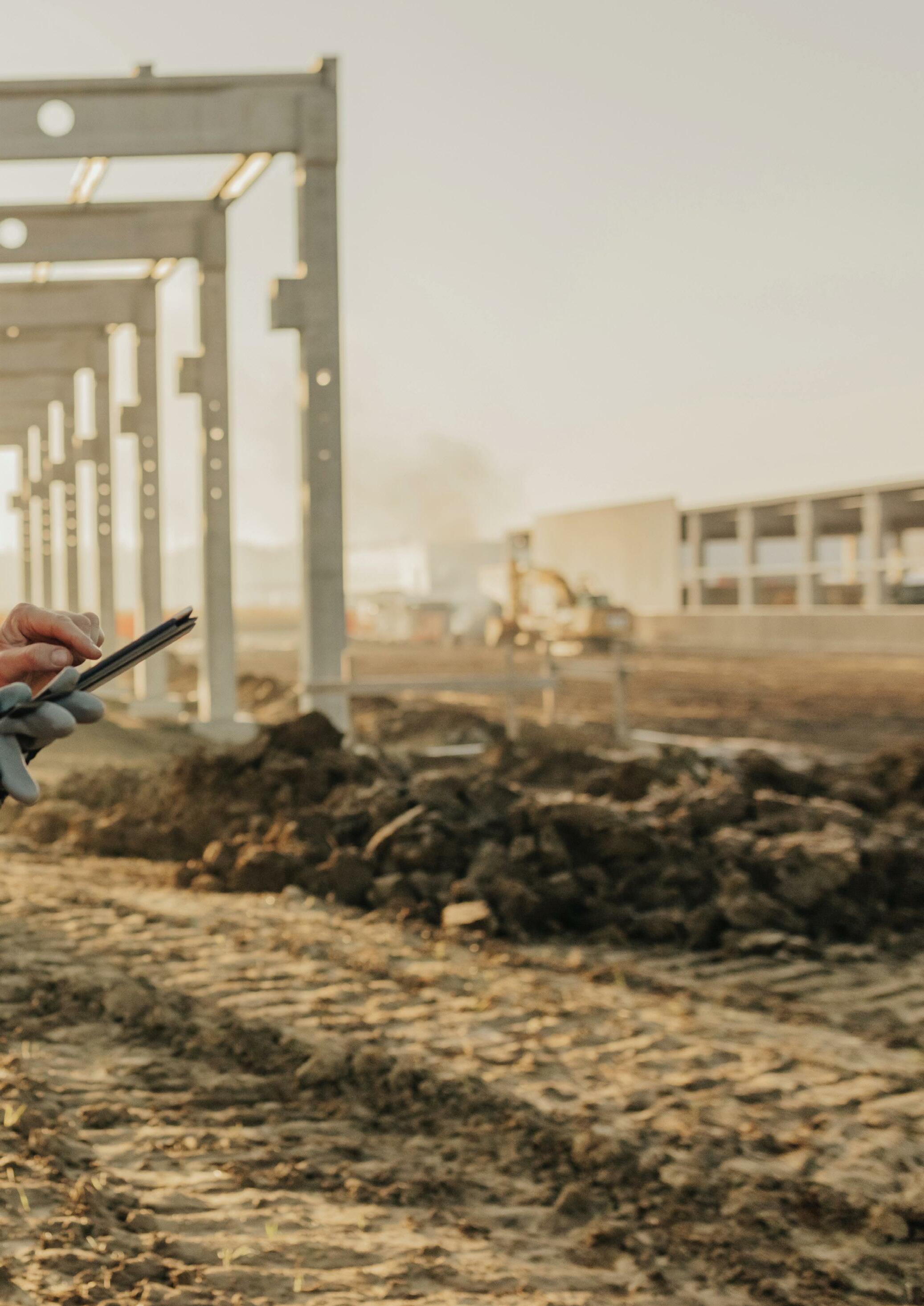
“But there are many other industries that are at an increased risk of NIHL, which can result in irrevers ible tinnitus and/or hearing loss for example, airline workers, emergency responders, DJs and musicians, farmers even teachers,” Hirschausen said.
It’s estimated that more than half a million Australian workers experience constant tinnitus 5 , which is a ring ing or buzzing sound in the ears. Tinnitus can result in sleep loss, concentration disturbance, decreased sound tolerance, anxiety and depression.5,6,7
Hirschausen said early intervention is critical. “Work ers live with the legacy of hearing loss long after they put down their tools. That’s why it’s so important for people who work in noisy environments to stay on top of their hearing health,” she said.
“Employees and employers alike need to step up. Get regular hearing checks and if you notice any changes, you should see an audiologist. The key is to not delay getting help. Untreated hearing loss can lead to social isolation, loneliness, mental health problems and re duced quality of life. 8 If you understand the hazards of noise and how to practice good hearing health, you can protect your hearing for life.”
Hearing Australia client 78-year-old Collin worked in the construction industry for more than 30 years during which time he says he never wore any hearing protection.
“I knew my hearing had been affected because I kept asking people to repeat themselves and found it difficult to hear in noisy environments,” Collin said.
“I later found it was near impossible to follow con versations in restaurants, and my wife had to raise her voice when speaking to me. I realised I needed to do something about my hearing. With the care and support I’ve had from Hearing Australia, I’m truly amazed at how my hearing has improved and the difference that hearing aids have made in my life.”
Hearing Australia Managing Director Kim Terrell said the organisation is actively collaborating with stakeholders to co-design initiatives that will help to prevent NIHL in high-risk industries.
“For 75 years, Hearing Australia has been caring for Australians affected by hearing loss, starting with help for returned war veterans in 1947,” Terrell said.
“NIHL is avoidable, and it remains a key area where action is needed, with 37% of adult hearing loss estimated to be preventable. 8 We’re committed to working with government and industry to help Australians protect and preserve their hearing throughout their lives so they can stay connected to the people and life they love.”
In time for Safe Work Month, Hearing Australia has released a new fact sheet, Protecting your hearing at work, with useful information on noise-induced hear ing loss and top tips for protecting hearing at work.
1. Lewkowski, K.H.J.; Li, I.W.; Williams, W.; McCausland, K.; Gray, C.; Ytterstad, E.; Glass, D.; Fuente, A.; Si, S.; Florath, I.; et al. Exposure to noise and ototoxic chemicals in the Australian workforce. J. Occup. Med. 2019, 76, 341–348. 2. WHO, 2018 report on Addressing the rising prevalence of hearing loss 3. Beach E, Gilliver M & Williams W (2016) Hearing protec tion devices: Use at work predicts use at play, Archives of Environmental & Occupational Health, 71:5, 281-288, DOI: 10.1080/19338244.2015.1089828
Safe Work Australia Work Inquiry into the Hearing Health and Wellbeing of Australia Submission 35 https://www.aph.gov. au/Parliamentary_Business/Committees/House/Health_Aged_ Care_and_Sport/HearingHealth/Submissions 5. Lewkowski K, Heyworth J, Ytterstad E, Williams W, Goulios H, Fritschi L. The prevalence of tinnitus in the Australian working population. Medical Journal of Australia.
Mar
6. Raj-Koziak D, Gos E, Kutyba J, Skarzynski H, Skarzynski PH. Decreased Sound Tolerance in Tinnitus Patients. Life (Basel). 2021 Jan 26;11(2):87. doi: 10.3390/life11020087. PMID: 33530474; PMCID: PMC7911028 7. Lee HY. Beyond Hearing Loss: Does Tinnitus Cause Cognitive Impairment? Clin Exp Otorhinolaryngol. 2020 Feb;13(1):2-3. doi: 10.21053/ceo.2019.01949. Epub 2020 Feb 1. PMID: 32036637; PMCID: PMC7010497 8. Deloitte Access Economics 2017 Hearing Care Industry As sociation The Social and Economic Cost of Hearing Loss in Australia. Commissioned by Hearing Care Industry Association Final Report by Deloitte Access Economics.pdf (hcia.com.au) Hearing Australia www.hearing.com.au/ NOVEMBER 2022 SAFETY SOLUTIONS 31 www.safetysolutions.net.au
4.
2022
7;216(4):189-93.
ENSURING SAFE AND SECURE HUMANROBOT COLLABORATION WITH PILZ
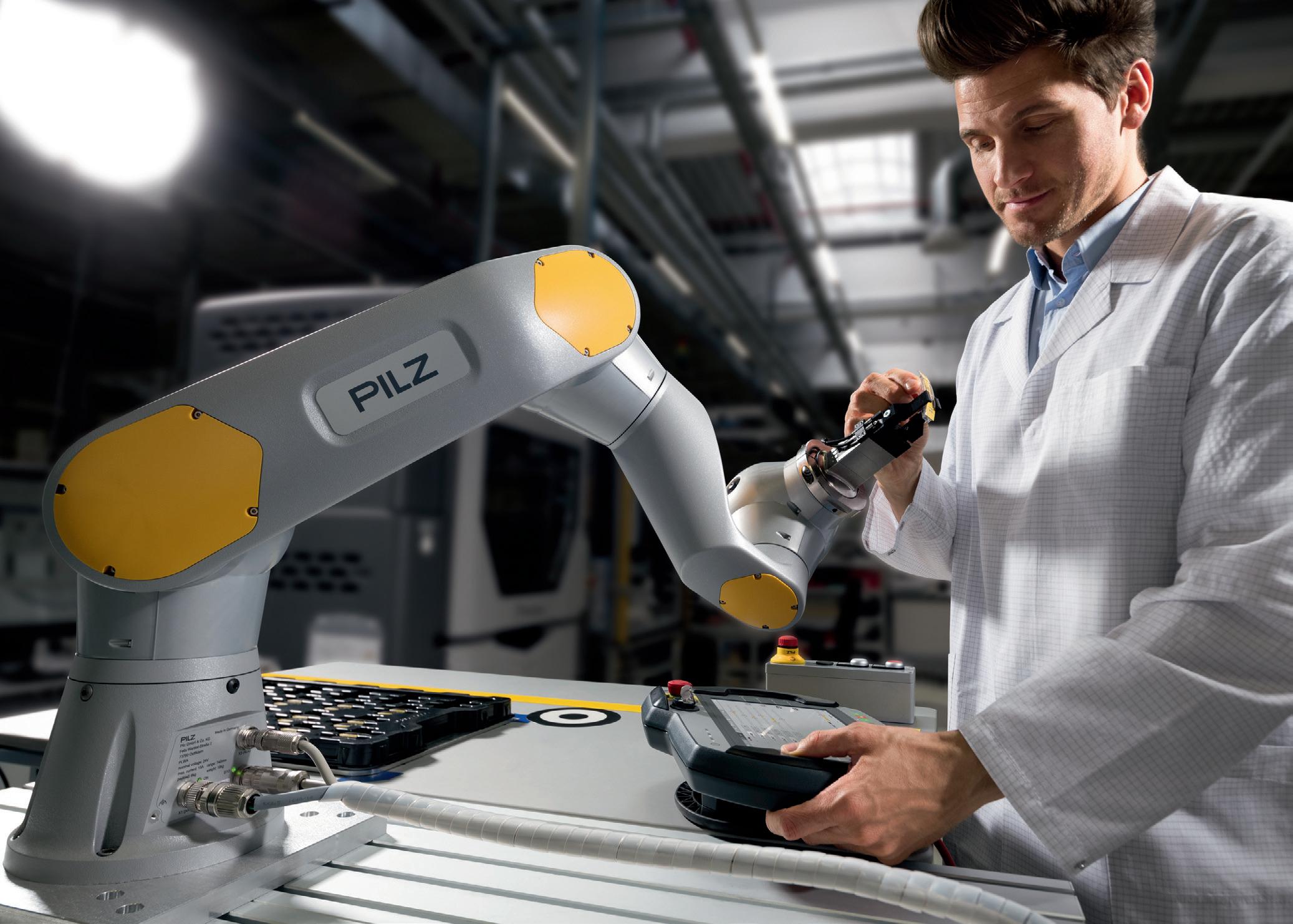
There is hardly any other machine that catches the imagination of humans as much as robots. They are the perfection of machines due to their larger degree of freedom in terms of diversity and the scope of their activities. Robots ultimately express the human aspiration to have machines that participate in people’s lives and assist them in every situation.
From cooperation to collaboration
In today’s industrial era, closer collaboration between humans and machines is on the rise. Collaborative robots, known as ‘cobots’, are designed to work alongside humans to augment and enhance performance. It keeps humans at the centre of robotic interventions. The strengths and advantages of the machines such as reliability, endurance and repetition accuracy are therefore combined with the knowledge and flexibility of humans.
Cobot applications vary significantly, but in general, they are used to extend human’s physical capabilities, enabling them to perform more high-value tasks. For example, a cobot arm could do the heavy lifting required to pick and place items, while a human performs corresponding tasks requiring dexterity and judgement. In human-robot collaborations such as these, the workspaces of the humans and robots overlap spatially and temporally.
This presents many challenges to safety as there is no one way to ensure a safe robot application. There are many aspects that need to be considered to achieve a safe and secure humanrobot collaboration. Following the right processes however is key to ensuring the application is as safe as possible. Performing a detailed risk assessment of the application, implementing appropriate safeguards, followed by a thorough validation process using the appropriate measurement tools should be undertaken for all applications.
A step-by-step guide for a safe robot application
1. A risk assessment is carried out at the beginning Risk assessment involves determining the applicable harmonized standards and regulations, the limits of the machine, the risks within each life phase of the machine, the actual risk appraisal and assessment and the recommended approach to reduce the risk. It is important that each hazardous area is considered individually and without protective measures.
2. The central role of validation
The safety concept and system integration are developed in a customised way based on the findings identified in the risk assessment. In contrast to risk assessment, each hazardous area is considered with protective measures in validation. For this, the robot application must be in a state such that it is ready for delivery.
32 SAFETY SOLUTIONS NOVEMBER 2022 www.safetysolutions.net.au
SPONSORED CONTENT
In accordance with the standard, various methods must be applied for the validation, including visual checks, practical tests and measurements. Validation includes, among other things, the verification of the required performance level PLr, a fault simulation (2-channel triggering, crossfault, etc.), overrun traverse measuring if the HRC application is to be made safe using speed and separation monitoring, checking of the standards in accordance with EN ISO 10218-2 as well as collision measurement in the event of the use of the power and force limiting method.
3. Touching without injuring Collisions can be mitigated in various ways: Through design and technical protective measures such as the rounding of edges and corners and reduction of the speed of the robot movements. Finally, it must be validated by means of a measuring method whether the possible collisions are harmless from a technical safety perspective.
4. Measurement of force and pressure in accordance with ISO/TS 15066
As for all measurement methods, these types of measurements must be comprehensible, traceable, and reproducible.
The Pilz Robot Measurement System (PRMS) examines human-robot collaborations (HRC), recording force and pressure.
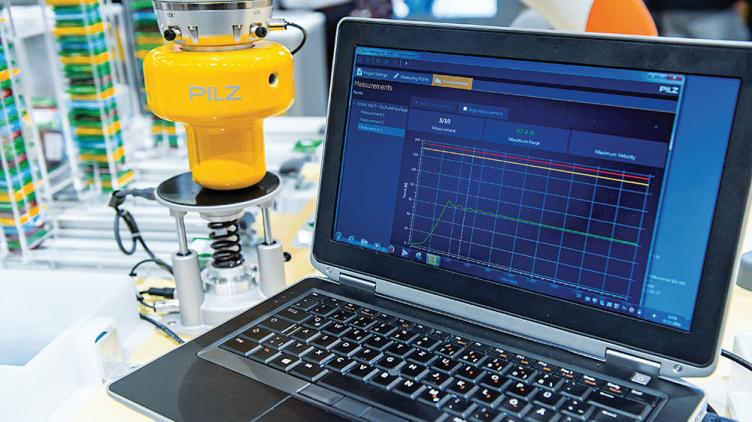
Force measurement
The force measurement device is equipped with springs and sensors to measure the forces exerted on the human body. The nine different springs have different spring force constants and are used in force measurement to recreate the various body regions.
Pressure measurement
Pressure indicating films are used to measure the local pressure and compare it with the limit values specified in the standard. A convenient software tool is available for validating and digitalising force measurements and for generating test reports.
One can either buy or rent the collision measurement set PRMS depending on business needs. The set includes:
• 1-day practical product training including HRC measurement technique
• Force measurement device PRMS
• Pressure indicating films
• Compression elements
• Scanner for evaluating the pressure indicating films

• Sophisticated after sales package — including calibration and software updates
• Robust carry case
*Product training is included when buying the PRMS Set. When renting, the price of the product training depends on the rental period.
To date, at least, there is no one safe robot or one safe sensor technology that covers all possible scenarios from the applications in terms of safety. The requirements in relation to the safety technology always depend on the respective application. Safe robot cells only come about when everything is taken into consideration — robots, tools and workpieces as well as the associated machines such as materials-handling technology. In practice, this means that each application requires its own separate, in-depth safety-related review. The safe HRC application is therefore ultimately the result of the interaction of normative basic conditions, a complex risk assessment that is based on this, the selection of a robot with the corresponding safety functions, the selection of suitable additional safety components and, finally, validation.
As a member of the international standards body, Pilz has actively collaborated with robot manufacturers, integrators, notified bodies (such as BG) and other automation companies on the design of pioneering technical specification for humanmachine collaboration in the industrial environment. Pilz also provides support for the implementation of relevant standards and directives. Jointly with the customer, the experts at Pilz work out a globally optimum safety strategy for robot applications along the life phases of the robot system through to CE marking and employee trainings which has up-to-date and practical content pertinent to robot applications.
Pilz Australia Industrial Automation LP www.pilz.com.au
NOVEMBER 2022 SAFETY SOLUTIONS 33 www.safetysolutions.net.au
CASE STUDY
Incorporating AI for safer tram operations
Trams on the Parramatta Light Rail network will feature a collision warning system that incorporates artificial intelligence (AI) to support drivers.
The driving of trams requires maximum concentration over long periods of time, meaning that in complex traffic situations, collisions with other vehicles may occur.
To mitigate this, Bosch developed the warning system, which CAF Rail will install onto the vehicles for Stage 1 of the Parramatta Light Rail network.

“This is a logical application of driver assistance technologies found in other types of vehicles it will make tram travel safer for everyone, helping to protect human lives as well as preventing accident damage,” said Gavin Smith, President of Bosch Oceania.
“We want the Parramatta Light Rail to be one of the safest and most reliable public transport systems in Australia, so the Bosch collision warning system is a perfect fit for us,” said Ramon Muntada, CAF TE Area Manager.
“Not only will it benefit the drivers of the light rail vehicles, but it will also help to reduce accidents.”
The tram collision warning system was developed from similar technology originally created for passenger cars. The tram collision warning system warns the driver in the case of an imminent collision.
The system combines video and radar sensors with a highperformance electronic control unit. The video sensor monitors the track layout ahead as well as vehicles and people, while the radar sensor monitors mobile obstacles and detects any static objects. The electronic control unit processes information from both sensors.
The information is merged into a very detailed image of the surroundings and supplemented with additional information, such as the speed of the tram. If the system detects a critical approach, it warns the driver visually and acoustically.
Although the AI-based system reacts autonomously, the driver can intervene and override the system at any time using the driver acknowledgement function.
This technology can play a key role in preventing tram accidents. Recent statistics reveal there were 612 collisions reported between a tram and road vehicle and 23 between a tram and person in Australia in the 2020–2021 financial year1
The collision warning system has an extended functionality that introduces automatic emergency braking if the driver reacts too slowly or not at all to the warning.
The full collision warning system has already helped to improve safety in Europe. For example, in one German city, the number of tram accidents fell by more than 40% following the installation of the collision warning system, even though the number of trams in operation increased.
The technology not only saves lives but also significantly reduces costs for operators by reducing network downtime and thus improving the reliability of the service to passengers.
In 2021, the system was already used in approximately 550 trams in 19 cities across Europe. This year, the system will also be introduced in North America.
1. Office of the National Rail Safety Regulator 2020-2021 ONRSR Rail Safety Report
Bosch Australia www.bosch-solarenergy.com.au
34 SAFETY SOLUTIONS NOVEMBER 2022 www.safetysolutions.net.au
The tram forward collision system is based on the interaction of radar, camera and control unit.
Fire protection systems
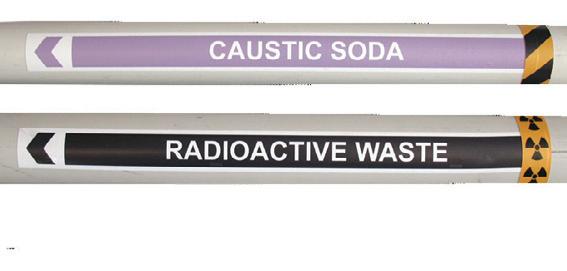

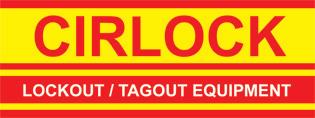
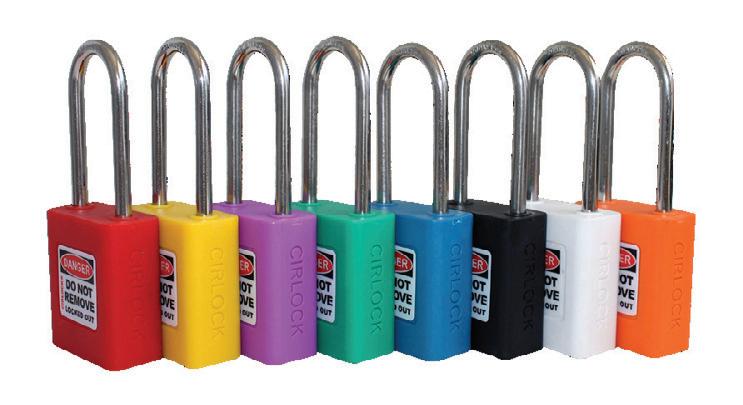
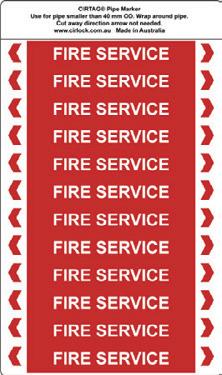



Honeywell has launched Fire-Lite, a suite of conventional and addressable fire pro tection systems suitable for small to medium-sized buildings, in Australia. The easily installed solution offers fire detection and protection in new and existing buildings to help keep people and property safe.
The fire protection systems include customisable and intelligent Addressable Fire Panels that are designed to meet a range of building requirements and the needs of installers and end users with efficient fire alarm control panels. The fire panels also allow installers to provide flexible solutions to support a variety of installations.

The fire protection systems also include photoelectric smoke, fixed heat, rate of heat rise, high sensitivity and advanced multi-criteria detectors, along with manual call points, intelligent modules and specialty detection. The systems provide audio-visual (AV) fire notification with audio and visual alarm devices, speakers and Grade-3 Emergency warning system.
The fire protection system’s specialty detection and ancillaries include flame detectors, optical beans and standalone power supplies, all with backup components. The systems can also integrate with the Honeywell Connected Life Safety Services (CLSS) platform that enables systems integrators and facilities managers to deliver an enhanced fire safety service. The systems also meet relevant fire product standards including Australian AS 1670.1, AS 1670.4 and NCC re quirements. Fire-Lite is designed to meet the needs of small to medium-sized buildings, mid-rise residential, warehouses and retail spaces across Australia.
Honeywell Safety Productivity Solutions https://sps.honeywell.com/au/en
NOVEMBER 2022 SAFETY SOLUTIONS 35 www.safetysolutions.net.au
Plug-and-play platform
Industrial Eye has developed Sentry Connect, a rapidly deployable, plug-and-play platform that is designed to meet the challenges rising from a shortage of manpower during the COVID-19 pandemic. The platform is designed to reduce the number of frontline safety monitors needed for confined spaces, while still saving lives. The technology offers improvements to crew efficiency and safety and is suitable for any industry that involves confined spaces, which can be dangerous places to work.
The platform uses streaming technology to enable experienced safety crews to monitor more workers. It also maximises safety management by effectively giving one sentry a comprehensive single-view application with low latency real-time video as well as on-screen environmental data. The platform connects with multiple data sources compiled into a single interface for real-time monitoring as well as future analysis.


The platform provides data — such as oxygen and gas levels — and enables two-way conversations in remote working conditions such as high-risk construction, and confined spaces, such as mines and pits, elevator shafts, vats, tanks, pipes, ducts, chimneys, silos, underground wells, sewers and more.
The platform provides real-time monitoring and control of crew exposures, improvements in safety and emergency response times and access to data for long-term operational efficiency, crew health and safety.
Industrial Eye http://industrialeye.com.au
Gloves
Safety Mate’s NXG GreenTek environmentally conscious range of gloves is manufactured using up to 50% recycled PET yarn. Every pair of GreenTek gloves repurposes one to two landfill-bound plastic bottles.

The innovative range of gloves is designed to help the environment without compromising performance.
Safety Mate Pty Ltd www.safetymate.com.au
36 SAFETY SOLUTIONS NOVEMBER 2022 www.safetysolutions.net.au
WHY CONSTRUCTION MUST FOCUS ON MENTAL HEALTH RESILIENCE
Rachel Clements, Co-Founder & Director of Psychological Services, Resilia
The pandemic placed a strain on businesses and employees. Safe Work Australia’s key work health and safety statistics show 9% of all claims lodged in 2020–21 were mental health-related compensation claims.
Mental health and psychological injuries (such as anxiety, posttraumatic stress disorder and depression) have negative conse quences for companies and workers. This is an issue that affects all sectors, but the Productivity Commission says construction is a particularly high-risk industry for mental health and suicide.

A Chartered Institute of Building report, released before the COVID-19 pandemic, suggests 26% of industry professionals considered suicide in 2019 and more than half (56%) work for organisations with no mental health policies in place.
To deal with this, businesses need to be proactive about em powering workers with resilience skills. The best way to do this is by putting a dedicated program in place to empower people to effectively deal with stressful situations, learn from challenges and form meaningful connections with others.
Being able to call on positive coping strategies and knowing the value of making meaningful contributions to society will also prove useful.
After completing Resilient Me a self-guided psychological resilience program people with mental health issues reported a 75% improvement in anxiety, depression and stress scores.
The Case for Resilience report also reveals participants’ overall wellbeing improved by 40%, with 88% increasing work capacity, 12.5% taking on volunteer work and 25% starting a new job.
Empowered people and organisations can achieve and sustain recovery gains. Even in the face of seemingly impossible odds and challenging life circumstances, recovery is possible.
Early intervention is key
The sooner organisations address mental health issues, the better. Prevention is better than waiting until someone is ill or burned out, but early intervention also makes a difference.
Positive psychology practice prevents negative psychologi cal conditions, such as stress, burnout, depression, anxiety, and workplace dissatisfaction, but also improves a person’s quality of life, sense of satisfaction and capacity to thrive.
Many skills can be taught digitally, giving people a better chance of dealing with issues when they arise.
This kind of proactivity reduces compensation claims and im proves positive outcomes by 40%.
Early intervention programs can:
• Reduce time away from work
• Shorten recovery outcomes
• Increase capacity to remain at work
• Minimise the likelihood of further absence
• Improve workplace perceptions
How to bring this to life
The pandemic has made mental health impossible for organisations to ignore. Dealing with wellbeing can feel overwhelming, but there are a range of online resources to help.
Simple steps, such as educating workers about the benefits of effective nutrition, exercise, and mindfulness techniques, can make a difference.
Employees are increasingly looking for companies that demon strate a commitment to their wellbeing. So, introducing wellbeing measures may also help to attract and retain the best people.
For the best results, tailor programs to the specific needs of the organisation and staff. Getting this right significantly improves outcomes for people experiencing psychological injuries. If an is sue isn’t a problem for that individual, it needn’t be included in the program.
A good place to start is partnering with an organisation to understand the psychosocial risk factors for the business. It’s then easier to identify at-risk groups and put appropriate controls and measures in place.
Supportive leadership also plays a huge role to in employee wellbeing. Train leaders to make them feel comfortable and knowl edgeable when discussing these issues. Appropriately trained human resources personnel and line managers will also build a culture where people feel safe to ask for help.
This work takes time, so work around busy schedules and commit to teaching adaptive resilience skills on an ongoing basis.
Now is the perfect time to empower teams and make prevention and early intervention a key part of employee wellbeing programs. This will help individuals achieve and sustain recovery while im proving workplace mental health.
NOVEMBER 2022 SAFETY SOLUTIONS 37 www.safetysolutions.net.au
MENTAL HEALTH
©stock.adobe.com/au/Arpad Nagy-Bagoly
CASE STUDY
Keeping safety at the core of the construction industry
As Australia emerges from the pandemic, a recent forecast by the Australian Construction Industry Forum (ACIF) suggests that the construction industry is powering the country’s recovery. With a surge in residential construction and a strong pipeline of infrastructure projects, the industry is predicted to enjoy annual growth of 3.4% through 2025.
However, as the industry booms, the demand on workers will be strained. Coupled with the resourcing issues caused by the skills shortage, employers are also grappling with pressures to deliver projects on time. This can have dire consequences on workplace and employee safety. Safe Work Australia found that from 2019–2020, there was a 10% year-on-year increase in serious injury claims and a 6% increase in workplace fatalities.
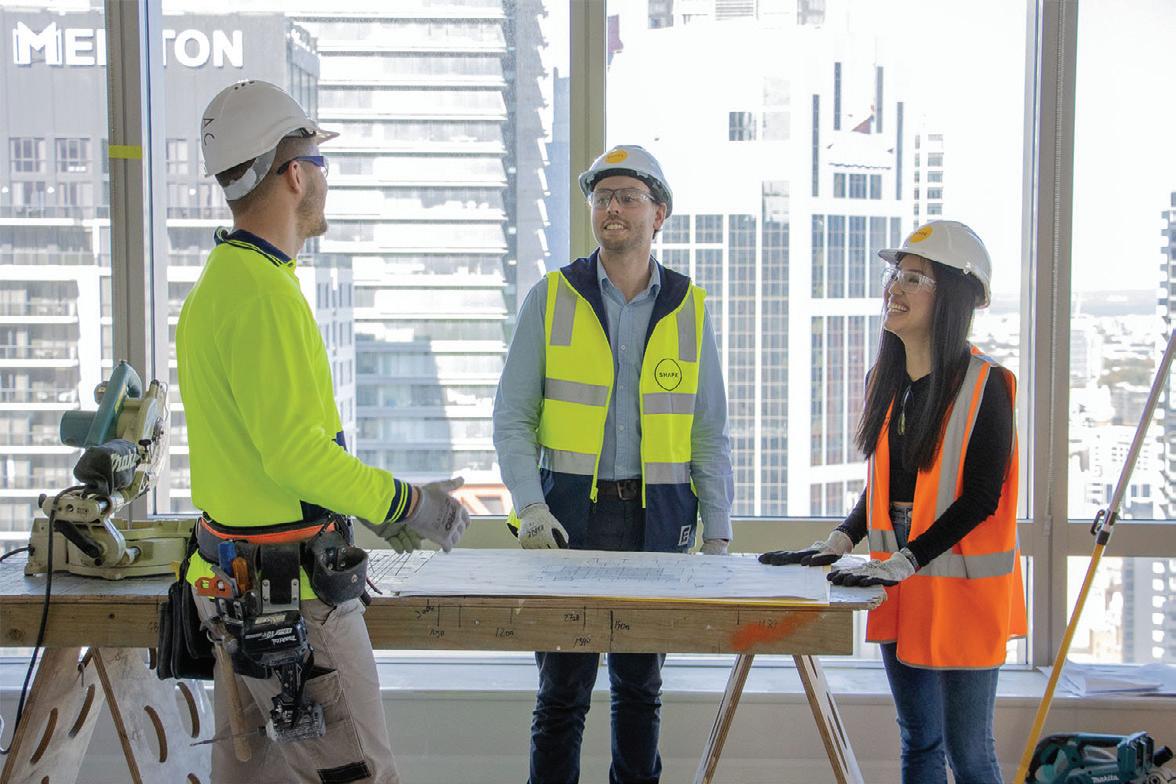
Building a safety-first culture should be at the forefront of any organisation, not just in construction. When the wellbeing of an organisation’s people and its subcontractors takes top priority, it creates a positive ripple effect on how the organisation performs.
Leveraging technology is one key way to empower any site manager, trade worker or contractor to take safety into their own hands. SHAPE has rolled out the Minimum Standards (SMS) app, which can provide quick and easy access to environmental, health, safety and quality management information from any mobile device.
Since launching the SMS app in 2020, the company has experienced a decrease in incidents and increased logging of positive observations. For instance, electrical incidents have decreased by 67% and asbestos-related incidents have decreased by 29%.
Utilising technology and procedures that will protect workers could also have significant financial benefits it is estimated that
more than $1.6 billion is being paid as compensation for serious injury claims.
The construction industry currently employs almost 10% of the country’s working population, yet more than one in five have a mental health condition. Construction workers are six times more likely to die from suicide than a work accident, equating to the loss of a construction worker to suicide every second day.
Providing training to help identify colleagues who might be experiencing challenges and offering the right support could make the difference. SHAPE currently has more than 65 employees who have taken ‘Connector’ training, designed to help spot and support employees, contractors and subcontractors who may be having a tough time. Along with more than 30 ASIST workers, who undergo an extensive two-day suicide prevention training course, Connectors and ASIST workers are available onsite as a line of support to keep employees safe.
SHAPE shape.com.au
Helmet holder
The Cap Grip hard hat holder is manufactured in Australia by Sureguard Safety and is designed to safely store most standard types of hard hats.
The hard hat holder contains high-performance magnets for attaching to metal sur faces, plus screws to attach to timber and plasterboard surfaces. It can be attached to office equipment, the inside of vehicles, metal cupboards and more.
The hard hat can be removed by pushing down on the locking clip and pulling forward.

UV-stabilised for outdoor use, the hard hat holder has an inbuilt safety glasses holder and is available in fluoro orange and yellow.
It is a patented product.
Sureguard Safety Australia www.sureguardsafety.com.au/
38 SAFETY SOLUTIONS NOVEMBER 2022 www.safetysolutions.net.au
Phillip Smith, Group Executive –Environment, Health, Safety and Quality, SHAPE Australia
For silica, exceed compliance with advanced protection
Powered air purifying respirators (PAPRs) offer the highest level of staff protection when working with stone and cement.
PAPRs are positive pressure airflow and P3 (HEPA) filters that ensure reliable worker safety and comfort while operating around dangerous silica dust.
CleanSpace respirators are the most advanced modern PAPR solutions on the market:
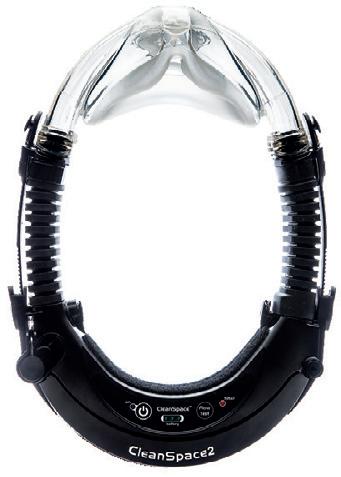
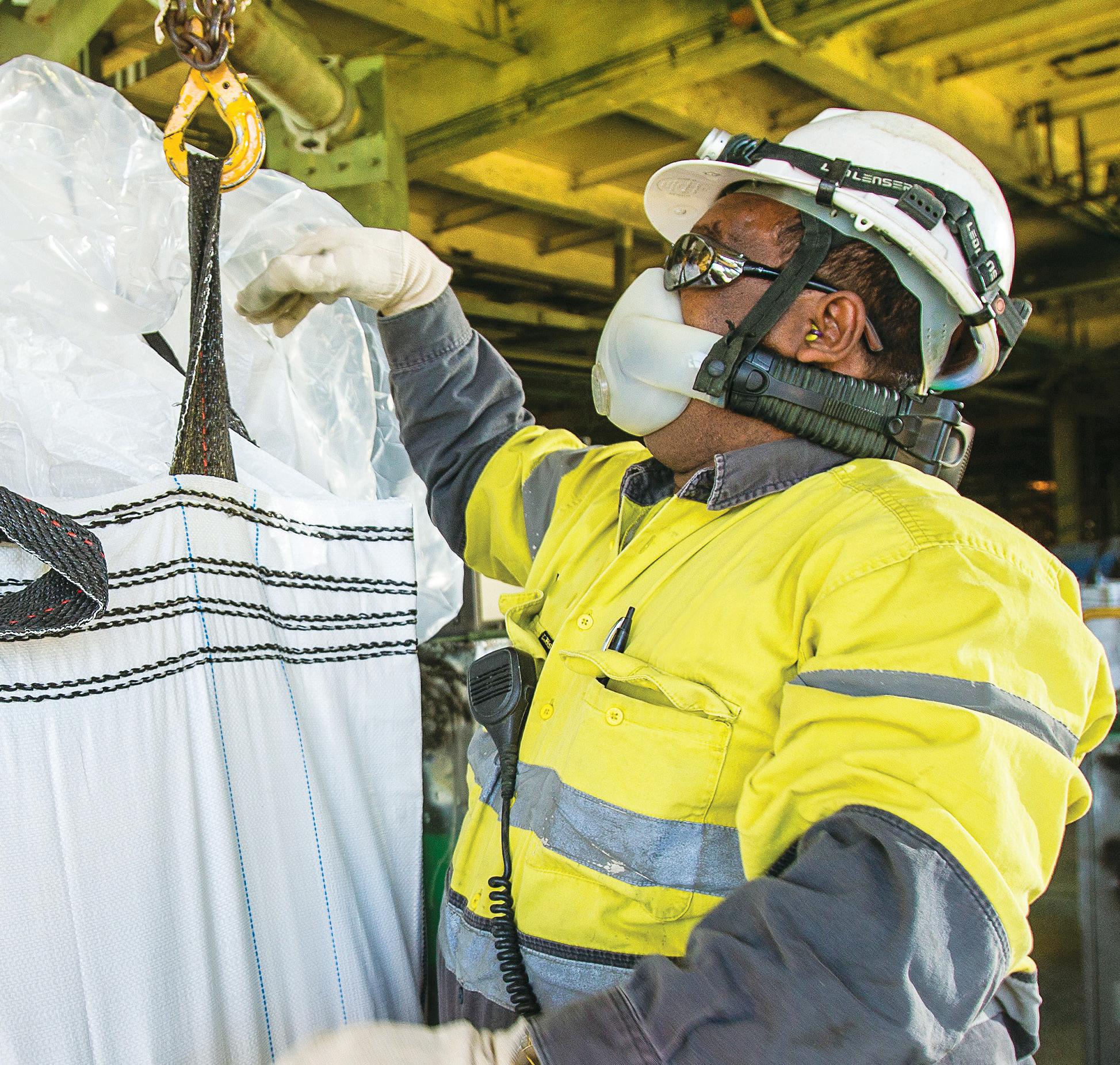
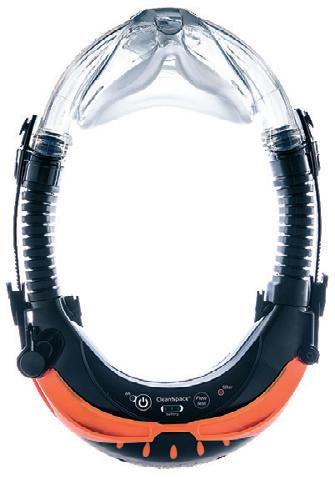
• High performing with no belts or hoses.
• Simple, few parts and fast to don
• Half and full face mask options
• Education and technical services
Talk to our local education and technical teams about how they support CleanSpace customers with easy implementation and beyond.
www.cleanspacetechnology.com
PAPRs exceed minimum requirements for regional codes of practice for silica dust exposure.
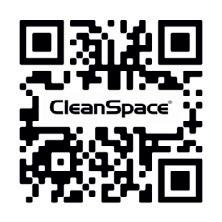
SILICA DUST: #1 CAUSE OF OCCUPATIONAL LUNG CANCER
APOSHO 36 COMES TO MELBOURNE
APOSHO 36 brings together leading innovators and thinkers in occupational health and safety from across the globe. Staged over three days, the event will feature a host of national and international speakers, multiple streams and a safety exhibition all taking place at the Melbourne Conven tion and Exhibition Centre, alongside the annual gala dinner and National Safety Awards at the prestigious Crown Melbourne.

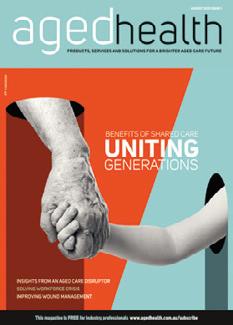
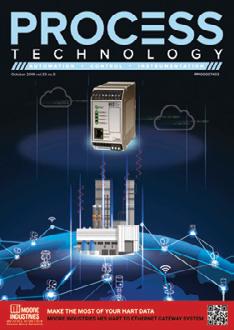

The Asia Pacific Occupational Safety and Health Organization (APOSHO) is an international body composed of non-profit professional organi sations, devoted to the prevention of occupational accidents and diseases. Although full membership is given to non-governmental organisations in the Asia-Pacific region, any occupational safety
to industry and business professionals
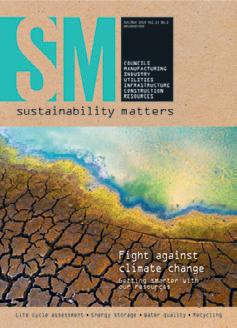
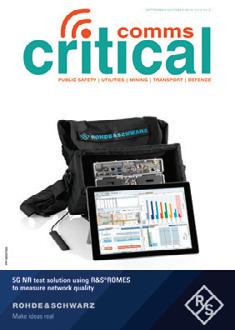
and health organisations even in the regions other than the Asia-Pacific can join the APOSHO as associate or affiliate members.
The first APOSHO Annual Confer ence took place in Singapore in August 1985, chaired by the chairperson of the National Safety Council of Australia. It was initially called “the Coordinating Committee of Asia-Pacific National Safety Councils” and later in 1992 renamed at the 8th Annual Conference. As of 2020, the members are from 39 organisations from 21 different countries or districts.



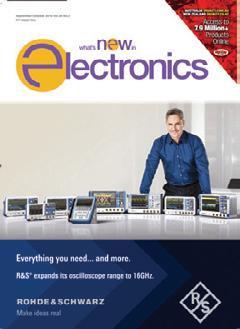


Register today to be part of this event and don’t miss out: aposho36.com.au. The Association Specialists www.theassociationspecialists.com.au
The magazine you are reading is just one of 11 published by Westwick-Farrow Media. To receive your free subscription (magazine and eNewsletter), visit the link below.
www.WFMedia.com.au/subscribe
40 SAFETY SOLUTIONS NOVEMBER 2022 www.safetysolutions.net.au
FREE
EVENT
POWERING UP RESPIRATORY PROTECTION WITH MODERN PAPR TECHNOLOGY
The dangers of inhaling silica dust in the construction and building sectors are very real and the associated serious diseases are preventable.
If dust is visible, then silica will be in the air that workers are breathing. High-level respiratory protection strengthens the margin of safety for silica and is a worker’s personal line of defence. Powered air purifying respirators (PAPRs) in particular offer a high level of respiratory protection that covers the range of dust levels and exposure times.
When considering exposure risks from silica, there is now modern PAPR technology designed for construction and building sectors that meets or exceeds compliance requirements.
Protecting against silica
Silica dust is the number one cause of workplace lung cancer and irreversible silicosis. In the construction and building industry, silica is p
Respiratory protection equipment (RPE) is not protective if systems cannot be adopted or used currently. Modern light PAPR systems, with no hoses or belts, are practical and high protec tion, enabling workplaces to reliably replace disposable negative pressure masks.

In many workplaces and tasks, exposure to contaminants can not be managed by engineering controls. Examples include tasks undertaken offsite, or where workers must be located close to the source (for instance, hard rock cutting and grinding).
Negative pressure masks, such as FFP2/N95 or elastomeric masks, although simple, have serious disadvantages and risks. Negative pressure masks rely on a tight and effective mask seal on the face. Talking, bending, unique face shape and stubble are all known to challenge the mask seal. Add to this improper donning or worker non-compliance due to fogging, heat and moisture and there are too many uncontrollable events for a worker or employer to manage.
with high (above 99.97%) filtration efficiency (HEPA). This type of PPE provides high protection and comfort. Traditional PAPRs are associated with heavy belt-mounted battery packs and hoses, requiring complex assembly and donning and are not accessible for short jobs or on the road.
Advances in PAPR technology have produced a range of lightweight, compact and simplified systems all designed to enable ease of use and ready access in the workplace. Through miniaturisation and air pressure controls, modern PAPR devices control the mask positive pressure and respond in real time to changes (brought on by talking, bending etc) to overcome mask leak and prevent contaminated air entering the breathing zone. Advanced close-fitting PAPRs leave the body free of belts and hoses.
Lightweight (less than 500 g) and compact modern PAPRs have few parts, are easy to assemble/fit and are a practical/durable addition to workplace kit.
Unlike traditional heavy PAPRs, modern PAPRs are breath responsive, offer long run time (up to eight hours) and have few parts (power unit and mask). These systems are modular and can be fitted with either half- or full-face masks (with high-impact vi sor rating). They also have a range of particulate and gas filters.
Modern advanced PAPRs are:
• approved AS/NZS1716 powered air and HEPA filters
• lightweight (500 g)
• compact, modular and few parts (power unit and mask)
• free from complex hoses or bulky belt packs
• durable with a minimum of two years’ warranty
• equipped to allow for fresh/cool airflow with no fogging; com fortable for long periods of wear.
Modern PAPR systems create a comfortable and effortless RPE experience and promote high compliance and worker protection.
Silica exposure, lung damage and silicosis are preventable businesses should consider high-level protection to meet or exceed workplace compliance.
PAPRs provide powered airflow for positive mask pressure which eliminates the reliance on mask seal and are certified
CleanSpace Technology Pty Ltd www.cleanspacetechnology.com
When considering respiratory protection, review the range of modern PAPRs with no belts or hoses
RESPIRATORY PROTECTION
NOVEMBER 2022 SAFETY SOLUTIONS 41 www.safetysolutions.net.au
CASE STUDY
CSIRO brings WHS to life with virtual reality training offer
Australian national science agency CSIRO is improving safety for those working in potentially hazardous environments with a training package that uses virtual reality (VR) to simulate risk scenarios. Training participants will gain a practical understanding of relevant control measures in a safe environment, including the consequences of emergency events that can result from specific hazards when the control measures are not implemented.
The training package was developed as a result of an incident at a Melbourne CSIRO facility in 2017, following which CSIRO entered into an enforceable undertaking with Comcare to improve work health and safety risk management in CSIRO laboratories, and to share the VR training package for the benefit of others.
Director of the Data61 Immersive Environments Lab and lead project developer Dr Matt Adcock said the new training package draws on over 25 years of CSIRO research into how interactive Computer Graphics and Computer Vision can help improve productivity and safety.
“We’ve been able to translate innovations from the research domain into a training platform that gets more out of the immersive display hardware that is becoming widely accessible today. Our software architecture is incredibly versatile, and this means new training modules can now be created for additional scenarios or training content more rapidly,” Adcock said.
Adcock said that the team of researchers, which includes domain experts from across CSIRO, continues to push the envelope to ensure their work maximises its impact. The researchers are also working on an Augmented Reality version of the training platform that can integrate digital holograms into a relevant physical environment through smart glasses. According to Adcock, the work on this project has already led to new research explorations and university collaborations, particularly around how Artificial Intelligence can assist immersive technologies to adapt individual users, their needs, and their environments.
The virtual environment is modelled after a generic CSIRO laboratory; with a focus on safety and risk management, participants will first complete a theoretical component before donning the VR headset and completing scenarios based on potential real-life incidents, such as a chemical spill, and a failed pressure vessel releasing hazardous gas. Participants will encounter scenarios that will help them build confidence while providing opportunities for exploration balanced with course correction before potential mistakes occur.
CSIRO’s Deputy Director and Science Director of Mineral Resources Dr Louise Fisher said the new VR training modules allow researchers to explore hazards and risk scenarios, and to receive feedback on their safety behaviours in a risk-free environment. “When we become used to our workplace environment it can make it easier to not see the hazards around us. This training allows participants, including over 2000 of our people, to practice their responses to simulated incidents in an immersive environment that is both familiar but also not their everyday lab. Similarly, people can train to work in higher-risk environments before entering them in reality,” Fisher said.
The new VR training package is available to research institutes and organisations located in Australia that undertake work in a laboratory setting, or similar. CSIRO is not charging participants to access the training.

CSIRO Data61 www.data61.csiro.au
Westwick-Farrow Media A.B.N. 22 152 305 336 www.wfmedia.com.au
Head Office: Unit 7, 6–8 Byfield Street, (Locked Bag 2226) North Ryde BC NSW 1670, AUSTRALIA Ph: +61 2 9168 2500
Editor: Amy Steed ss@wfmedia.com.au
Assistant Editor: Ashna Mehta
Publishing Director: Geoff Hird
Art Director/Production Manager: Julie Wright
Art/Production: Linda Klobusiak
Circulation: Dianna Alberry circulation@wfmedia.com.au
Copy Control: Mitchie Mullins copy@wfmedia.com.au
National Group Sales Manager: Nicola Fender-Fox Ph: 0414 703 780 nfender-fox@wfmedia.com.au
Industrial Sales: Candice Stannard Ph: 0467 000 147 cstannard@wfmedia.com.au
If you have any queries regarding our privacy policy please email privacy@wfmedia.com.au
ISSN 1447-8277 PP 100007391
Printed and bound by Bluestar
All material published in this magazine is published in good faith and every care is taken to accurately relay information provided to us. Readers are advised by the publishers to ensure that all necessary safety devices and precautions are installed and safe working procedures adopted before the use of any equipment found or purchased through the information we provide. Further, all performance criteria was provided by the representative company concerned and any dispute should be referred to them. Information indicating that products are made in Australia or New Zealand is supplied by the source company. Westwick-Farrow Pty Ltd does not quantify the amount of local content or the accuracy of the statement made by the source.
42 SAFETY SOLUTIONS NOVEMBER 2022 www.safetysolutions.net.au
YEARS CELEBRATING
iStock.com/metamorworks


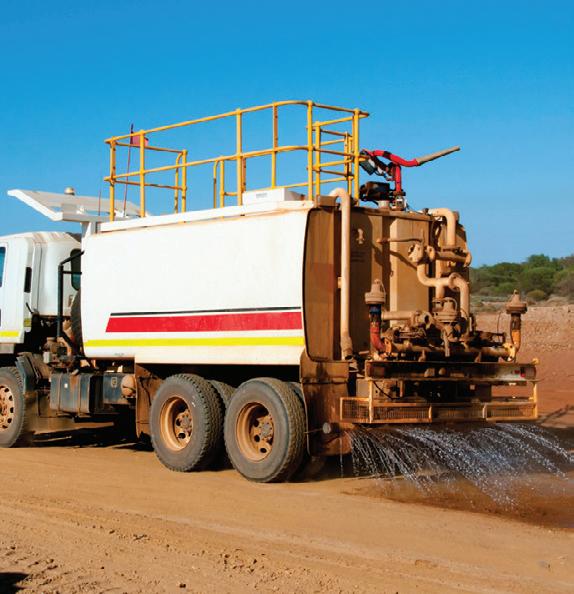


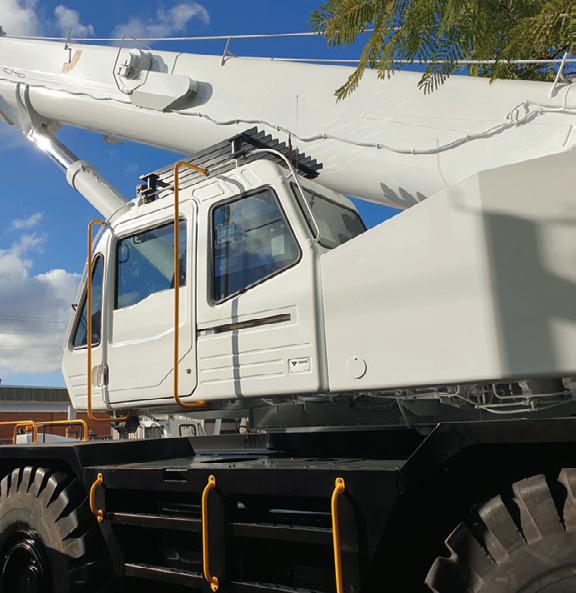
ISOCYANATES ZERO EXPOSURE

